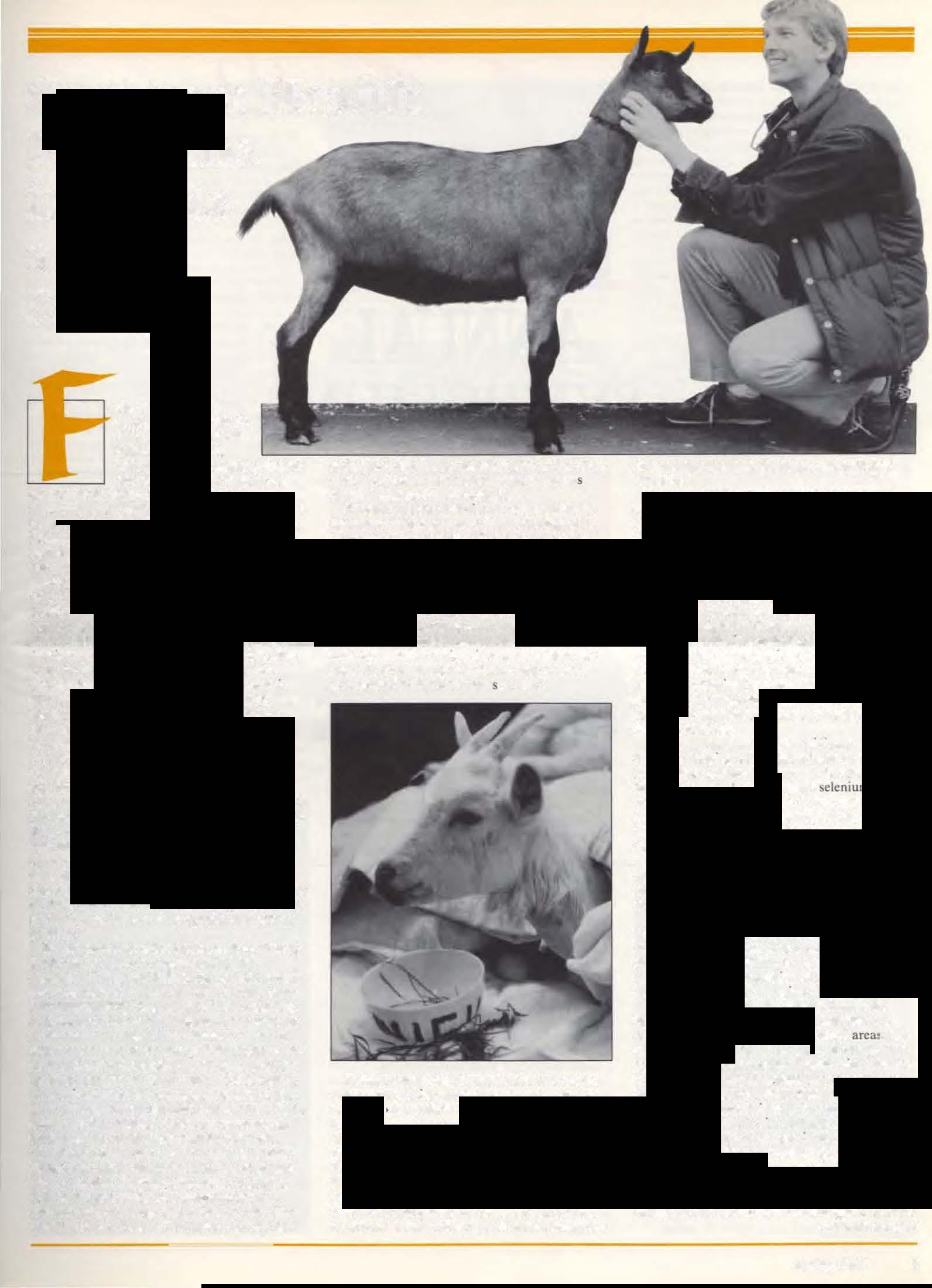ANNUAL SYMPOSIUM
AVeterinarian's Observationsonthe AUlineT�portofDo�

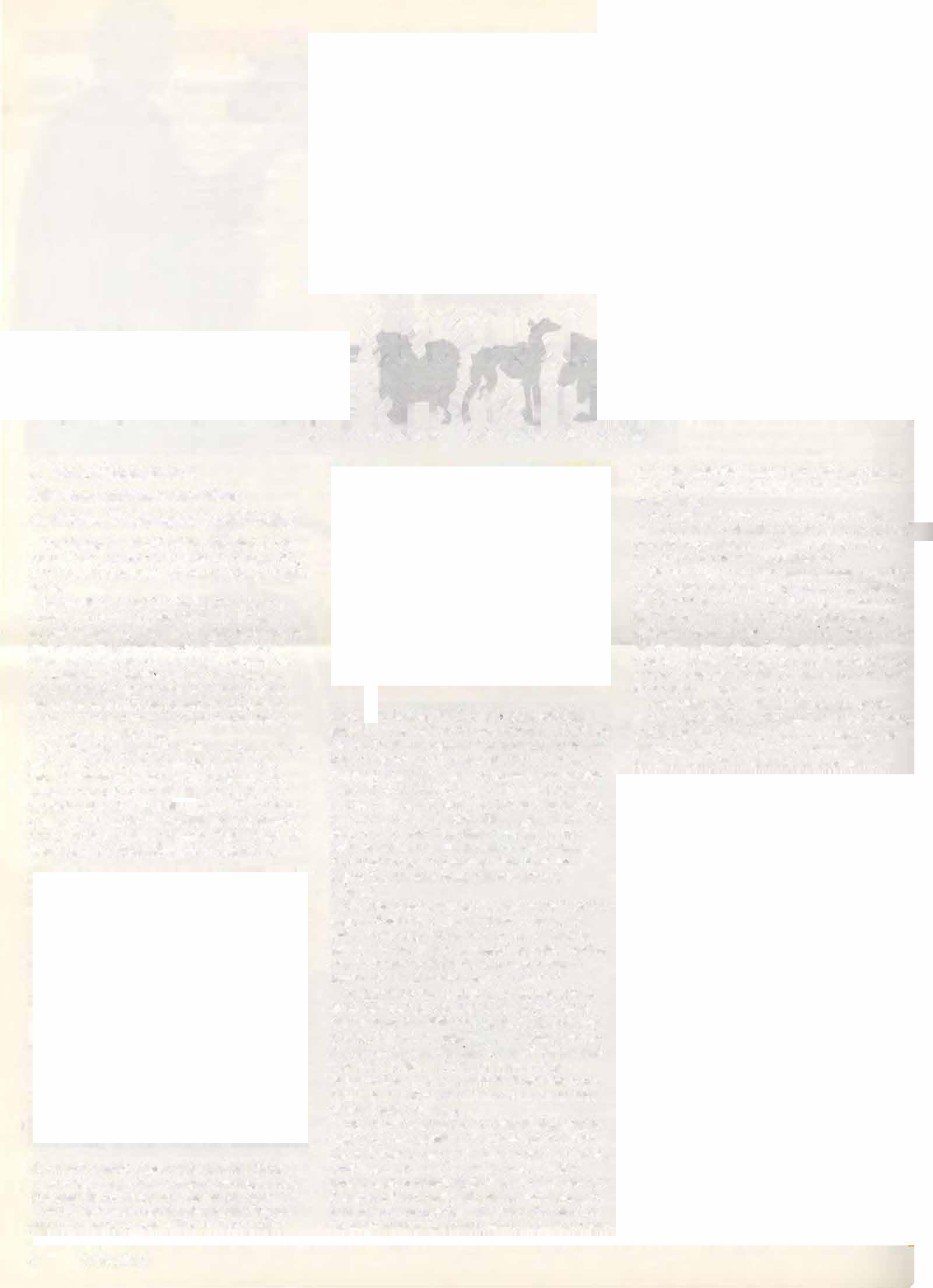
Dr. Walter M. Woolf (V'60), founder of Air Animal Inc.. a pet travel agency in Tampa, FL. discussed the intricacies of transporting animals by air.
Since 1969, when Dr. Woolf first began to arrange air transportation for animals, he has reserved "seats" lor species ranging from armadillos to worms. fhc large t number of traveller!) are family pets belongmg to owners who are relocating. Wootr agency �ees to it that pet:> are safely hou�cd once the family begms the move, that they are placed on the proper plane, and that they reach their destination in the shortest pos�ible time.
Dr. Woolf discussed the different types of aircraft and pointed out where family petS are housed aboard the planes. He explained that animals travel in the bulk bin. a heated. airconditioned and pres�unzed space. The animal crates arc placed in such a manner that there is plenty of air circulating around them. They are held in place with sandbags and cargo nets.
contamer. Today. U DA rule prescribe the proper SLZe as well as the construction of animal crates. He did recommend that for international tripl> a crate one l.ize larger than one used for domestic travel should bl! purchased as the animal will be in transit longer. He recommended that the animal be acclimated to the crate for a few days prior to the trsp. He suggested that the dog or cat pend orne time each day in the crate to become familiar with it. For bedding during the trip he recommended shredded paper. He fell that foam pillows are not suitable.
He also recommended that the animal receive neither food nor water for four to six hours prior to the trip. "It won't hurt the animal to travel with an empty stomach," he said. "And it will be more comfortable that way. When it reaches its destination tt can eat again."
To tra\lel by air. animab need health certificates and current vaccinations. As each state and country h� different regulations. it is best to check about the requirements before taking the pet to the veterinanan for vaccmations and a health certificate. If the animal is to be shipped abroad, one should find out about the requirements from the airline or the co�ulate of the foreign countr}.
lem." He feels that many deaths of pets during air travel can be attributed to the use of tranquilizers.
He explamed that airlmes arc very careful when handling animab and that they are treated as a priority shipment. "They are the last to board and the first to be unloaded."
He also suggested that when planning to ship a dog which requires a large crate. one should check with the airline whether such a crate can be loaded. "The dimension of cargo doors are different for each atrline." he satd. "You may be able to send your great Dane to California aboard a Della 727. but you may not be able to return it aboard a TWA 727 because of the differing dimensions in the cargo door�.
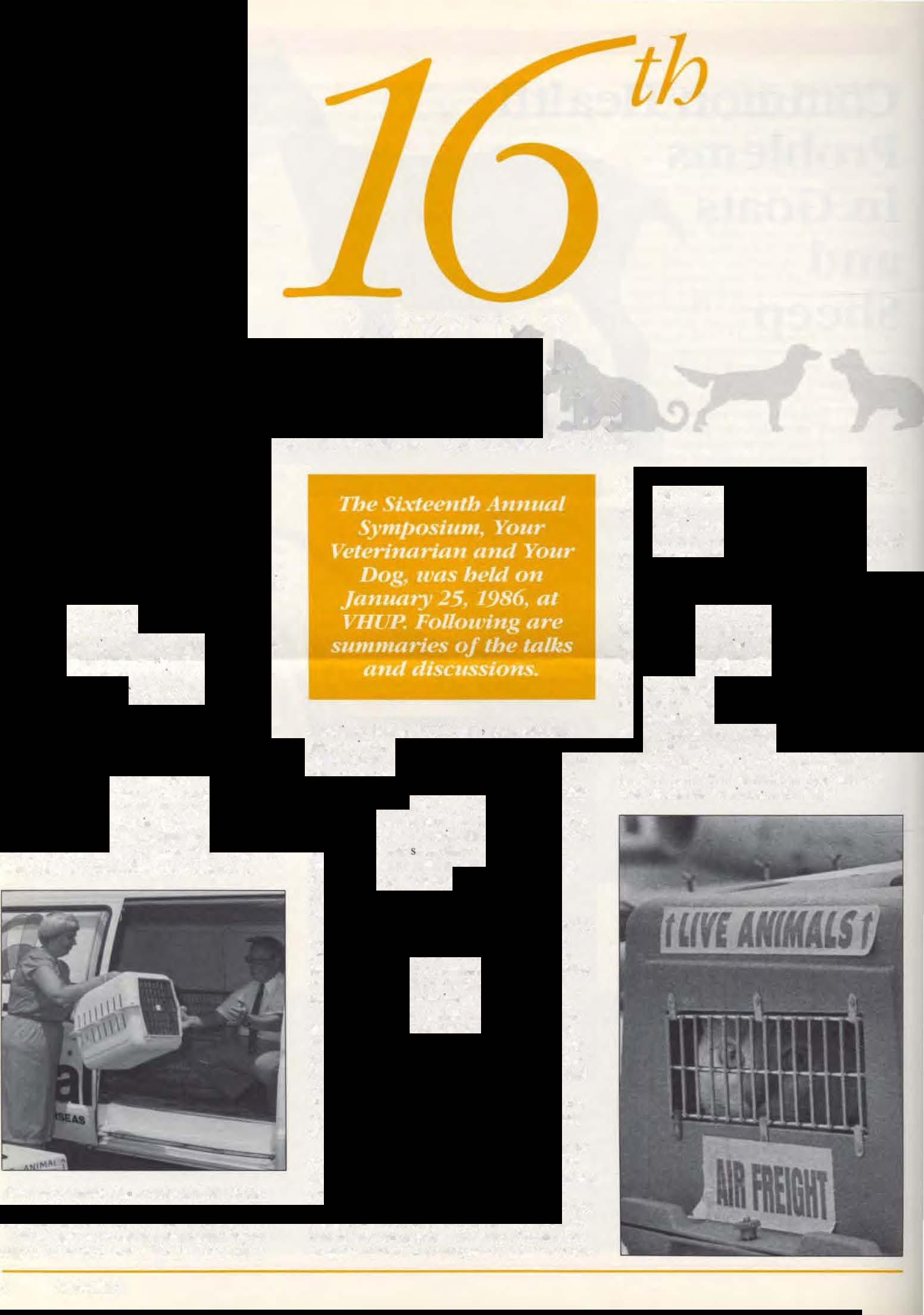
Accordmg to Dr. Woolf. air travel for animals is safe and fast. "You can transpon horses, cattle. chickens, tigcrlo. dogs, cats, ftsh, or any other species." he saJd. ''The airlines will accommodate these animals and get them to their destination qwckl) and safely."
Nothing is stored atop a crate and this is the reason shipping a dog or a cat is so expensive. One pays for the airspace around the container. Woolf had some tips for those planning to ship an animal. One should select the proper
Dr. Woolf is opposed to tranquilizing cats or dogs prior to shipping. "A tranquilizer affects the respiration rate of the dog or cal and serious problems can arise," he said. "An atrcraft is pressurized to about 8,000 feel, so what you are doing is taking a relaxed animal and putting it into relative oxygen insufficiency. lf it starts to struggle and breathe hard. you will have a prob-
4 Belht·ether
CommonlyEncountered SkinProblemsinDogs
Common -.km problem-. were the toptc of Dr. Robert Schwart7man.He prefaced the discussion by ad\t�tng the audience that in man\ cases skin problem� have a genetic balll . "Don't breed those animab "hich have repeated episodes of ,l.,an trouble. you \\illJU'l continue the problem."
Hot �pots (mOl t eczema) arc common. particularly tn longer coated breeds...Usuall} the undcrlymg cau\e i., fleall or impacted anal glands. " he ...aid. ''The antmal feels uncomfortable and begtns to lick the affected area. This constant 'worrying' causes a lesion and in a verv short time a weeping \Ore Will develop." Tr�atmem in\olve' clipptng �nd cleanmg the area. pre\entmg the dog Irom licl..tng it. and eliminating the underhing cause In thi area, hot spou appear to be:...casonal. mo 1ly in 1hc pring and summer.
Sarcopta: mange (scabies) \\as the next disorder da cus-.ed. h ,., caused b} a small mlle \\htch live... on the surface of the kin. Dogs wuh -,cabie., arc extremely uncomfortable and scratch conLtnuou 1}. cau�ing le"'on... The disease has a vcrv characteri'>llc dtstnbuuon pattern Ll'lually 11 bcg1ns around the ear and affecb the neeI... bell}. and "ometime� the legs. It is not a dilficult disorder tu cure ahhoueh diagno)Js "sometame� d1fhcult �cabaes as �ontagaous to humans, and Dr.Sch"'anlman aid in 30percent oftheeasel�theowm:r isabo affected.
Cheyletiella I) another nlite which affects dogs. AnamHis with th� largt! orgumsm have a lot of flaking, �caly skin and appet�r to be CO\ercd with dandruff. This mile pramarily afftL ., \41LI� puppie!- and it i contagiou to other ammals. If a dog has been diagnoed \\lth Che.rlctit•l/a it Is imponant to treat the emironment to eliminate the mite. \\hich can li\ie in nature lor quite a whtle. reinfesting the dog.
Another disease caused b\ mite-.. demodectic mange. is quttc senous. The.mite' causing this disea...e are present on the sil.m ordog cats. man.and other spcc1es and normallv do not cause an} trouble. HO\\Cver. 10 som� dogs the\ suddenly begin to mult1pl}, causing ha1r (ollicies to rupture and alln\\ing bacteria to enter This begm a cyck of 'lkan infcctaon . "There 1 a genetic predispositton and an1mals \\h1ch ha\ie

NationalBrands,Generics, andSpecialtyDogFoods
TodJ.)· pet 0\\ncr is confronted bv a bewildering arra} of dog food., \\hen 'hoppang an the supermarket. Product range from canned ··�inner ··to df) or !>Cmi-mobt food, lor puppte... performance dog.. and older dog., [\.enthing io; auracti\iel} packaged and rclentle:.sl� adwrtiscd a-. "1he best." fhc price con c1om: shopper can lorcgo fane.:) \\rappmg" and buy slorcbrands or gencnc dog lood Tho.,c who attend dog .,ho"' arc funher confu ed b\ an adduaonal ,eJcctaon of specHll fonds. ranging Irom grmqh dicb to "natutal''foods
Wluch then j., the food for one\ dog')··t'hat depend-..·· said Dr Da\ id Kronfeld during his dtscus1on. "If Bowser spend' hts da}'> on th� couch. ha, rc4uarcmcnts \'rill be different Irom those of •• dog which hunts. i' being sho\\n or which rnccs." lie then explained that clog food manufacturer... arc governed b} guidelines i:.sued by the National Research Council "NRC guidehot:� u�ed to be the standards manufucturer�
cignrshaped nrJ:anism j,adenwtJex mile had dcmodectic mange should never be bred."
He ..aid that the disease tail.e' tv.o forms. either hcnign. "here small localt7cd patches of ha1r Jo,., occur whtch often di.,appcar spontaneousl}. or .a:-. gcncrilhzed di,eae. The Iauer b the more enou� form as 'elf-cure does not occur and 'econdar) infection i, common. Oiaenosi i� made b} craping and b) looking for the mite under themicroscope. hedi'lca'e aflect mOi>tl) younger dog:.. Treatment has impro\ed over the last ten }Cars though it still IS lengthy. Dog� need bath� to kill the mtteo; and anttbiotics to clear up mfect10n:.. Dr.. chwartlman satd that ptoduct' no'" a\ ailable are about 70 percent ef1ecthc.
Seborrhea 1' another difficult d1sease to treat in dogs. "It a.. an antcrnal di:.e.to;e."he atd.




""Lsually the...e animals h<ne an underl)ing problem.ltke IO\\ thyroid \alues. lt\.er dv)functaon. adrenal tumors or other metabolJc or hormonal problems." Before the conditaon can be cured. the dermatologast mu:.t adentif} the under!}ing causes. Affected ammal� sho\\ exces,a\e scahng of the '"'"· oily or \\axy coal" and the) often have an odor. Frequent!} there �� a econdaf) l..tn anfcct1on. Treatment is prolonged and unles� the under!\in!! cause can be identified often fr ..trating.
Dr �ch\\art11nan pointed out th<Jt most �J...in infectiOns 1n dogs arc caused b; the StaphyloCOC'ca/ organi�m and that such infections are quite common. He did menuon that skin infections can indicate that an animal is not in top condition. "It IS imposc;ihle tu anlcct healthy sktn. 'o we rml'lt asl.. \\h) dad 1Im happen.� Often the ans\\er remau,., elu...l\c.


One of the mn!>t fre411t•n11\ occurring -.kin infection' j, due to Ilea bttc dermatitis. "It 1 charactc1io;tkalh a di,eJ-,c of the IO\\Cr back area:·he '>Uid. -It ts seasonal. Jul\ to October. though in some ca c., \\C: \CC it in·other months tO<.I...1he cau<;c or this dhordcl i� Ot.>a bates and an allcrg} of the dog 10 tht bites. Ihe animal itche., and -.cratches intense!\ .md bat.teria enter the lc-.aons: infection begins The.: dase<e occurs mo:-.1 lrequentl� in dOgll r1vc to nane year, of age
To cure i1. Oea:. must be eliminated from the emironment That often j., dif11cult as mo t product.. can J...ill adult fleas but wtll not aJfect the eggs or Janac \\luch arc in carpeb. cracks or bcddmg. "If )-OU have a dog with Ilea bite dermatitis. it would be a good IIIVClltment to have an c>..tcrmanaaor treat the hou�c. He does ha\c chemrcab whtch \\ill kill the egg' and lar-.ac:·Or Sclmartz.man fcclo, that flea collar<;. �hampon-, nr dips arc on!\ ot limited 'alue He d1d caution the audience Lo nut pul an} JOsectiun a dog that ha.' 'orcs.
(llryfrlit>llo




had lo adhere to." he said. "Recently they were changed from "a<.lcqu:ue.. to minimum requirements of available nutrient., on a caloric basis. The protean rc4uircment. for example. dropped from 22 percent to 10 percent. Whether an animal v.ill thrt\'C on -,uch a d1ct is another que uon."
He e\plaincd that nutritional -,cientasts and dog breec.le� lool.. at c.log food tn dtfferent \\ave;. "Scientl h ha\ e hcen concerned "1th minimu;, nutrnionul rcqutremenh. while brecder:s \\ant a d1et that "all enable a dog to 1each 11:. maxtmum potcntiul as n specimen of the breed and as u performer. .
The CO'>t ol the rood also pia}\ u role. If monc) \\ere no object. dogs wuld be fed organ and mu...cle meat ,t<; a protem .,ourct: Jn!)te<td of the cereal based feed). "Econom\ dictated the use of gram an dog Inod... he 'aad ..Cereal proteins arc inexpcn�ive and the dog. \\hile basically a llesh cater. hus adapted more or less to a grain dact. provided it is carefully supplemented with high qu<tltty protein.fat. vitamins <Jnd mmcral.,"
Dunng the 4UI!stton-and-J.ns\\er peraod be wa' asl..ed .about shampoo' lor do!:!'· He recommended b<.lb} shampoo� and �CI\un-blue. \sked abuut nca rcmcdie:-. he said that powders. m his \iiC\\, arc better than spta)'>a� the) have a residual effect. A-. to the que,tion whether dictilf) ...upplcmentll can act as repellan�. he felt. de,p1te the publici!) for ccnain \ itamms and t.nmpound... that thc�;c arc or little help. Or �chwartlman is profc.,�or of dermatolog\ and (h1el. �cction of Ocrmatolog). -·
Even so, lhc cereal ingredients arc not without dra''backs Sumc of the plnnt ing1edient:. utilited in dog food., Interfere with absorption of mmcral.,: it..., J..nO\\O, for e\amplc. that SO) produch contain goitrogen which depre�., lh\roid at:tion: thq abo contatn other sub,tanc \\l11ch oind up c.alc1um Io t:ountcract thi� effect. manufacturers add ,thundant calcium. \\hich ma} dimimsh ab!>orptaon ol copper and zinc or blocl.. aodine uptal..c in the th)roid gland. '1 he-.c tnlcraction' arc inrohcd m th� "gencril· dug fund di!.easc ., It ha-; been lound that dog leu genenc fuods cxclu.,l\cly can grow poorl�. de\clop anemaa or "kin dt.,ca,e.
Cereal food.. ha\c to be cool..cd to maJ...e them dage�tible for the dog. This partially de�ttO}" nutnenh. ,\lso.pre,enati\cs added to dog food can anOucncc health. Or Kronfeld pointed out that certain '>Cmt-rnoa�t loods contain high amounts of ac1d� and that rcccntlv -;uch acad-. have aJ,o been ildded to dry lood�.Another substance. propylt:nc glycol. also a pre\ervative. can damuge red blood cells.
continued onpage6 Sprinf! /986 5
DogFoods
continued frnmpageS
The picture"' funhcr complicated b) the fact that the fonnula for dog foods changes. depend ing on the availabiht) of the ingredients. in an effort to keep the co�t low...You rna) be buying the !)ame brand. but the ingredients are different in each part of the counlr) and the dog must adjusL...
01scussing the minimum protein content of 10 percent established by the new "lRC guideline�. Or. Kronfeld pomted out that many studies have shown that dog� need 25 to 30 percent protein in their diet to grow properly. An even grenter amount is required to cope with stress.
What can the consumer do to ensure that his dog eats the proper diet? According to Dr. Kronfeld. he first should look at the animal to ascertain whether it is in prime condition. Is the coat glossy and dense. is the animal aothe and alert? Is the tool dark and dense'? Large amounts of stool. foam). pale or in the color of the Lood. ind1cate poor digt:suon. The consumer should also lool.. .tt the lilit of ingredients to find out the amount ol protein. "When comparing foods and quantities. l..eep in mmd that the expanded food� conuun a large amount of air and are bulkier than kibbled foods." He also mentioned that breed" with a predisposition to bloat should not be fed expanded food dry, that it should be soaked to mimmize the amount of air ingested.
The nutritional value ol most expanded dog foods can be enhanced by the addition of meat or eggs and milk... Fggs and mil� provide the right amino acids to improve protein quality. as well as trace minerals and vitamins. If you wam to .1dd thi�. introduce it ...lo�ty to gi\e the dogs system ume to adjmt." Another alternative 1s to feed a fixed formula diet. These are more expcnshc but denser. and dog� generally eat less
He \\� �ked about vuamin supplementation and re!>ponded that the national brands of dog food contain adequate amounts, making supplementation supernuous. He warned against supplementation with minerals. especially calcium. explaining that this would do more harm than good.
In closing Dr. Ktonfeld mentaoned that the consumer dictates what is offered for sale bv the feed companies. ''A few year ago. a very high quality food based on our sled dog studies was test-marketed. lL did not sell and was withdrawn. People perceive the current products as adequate."
Dr. David S. Kronfeld is Elizabeth and William Whitney Clark Professor of Nutrition at the School.
UpdateonBloodDiseases
Dr. W. Jean Dodds provided an update on blood di eases. She discussed three groups of disorders. acquired and Inherited bleeding disorders. and ammune-mcdiatcd blood dtseases. Two d1sease sta£es that produce bleeding disorders in all mammals are poisoning by rodenticides and liver d1sease. Dr. Dodds explained that rodcnticides currently are posing a new problem in veterinary medicine. ''Rodents have evolved a genetic resistance to compounds. Now a new generation of more potent poisons is being produced and marketed. Non-target mammals, such as cats, dog!.> and man. have not developed that resistance, and they are in great
danger if they ingest these ne� substances.'' These rodenticides are 20 to 100 times more toxic per untt tngested than the previously used compounds. Effecb arc longer lasting. The half life is up to c;i" to eight weeks compared to 24 to 48 hou•� with the older poisons.
This means that treatment to save an affected animal must be conunued for a long period of time. The previous treatment of one or two
vitamin K injections is insufficient; animals or humans that have eaten the new type of rodenticide need repeated vitamin K treatment for up to ix to eight weeks. Dr. Dodds recommended that if rodenticide poisoning is sU!!pected the animal be treated a� ir it had ingested one of the newer compound!!.. She mentioned that a pamphlet outhnmg the effects of the new generation of rodentit.:ides I)) being distributed to veterinarians nationwide to acquaint them w1th the chang� in the nature and effect of these rodenricides alread) \\1del� u�ed b) exterminators.
Rodenticides affect production by the li\ier of vitamin K-dcpendcm clotting factors. However. there are other dtsea.l>t:s wtuch can interfere v.ith the clotting factor producuon of that organ. If the liver 1s dtsea.sed or mfiamed. clotting factor productiOn can be inh1bitc:d. causing bleeding disorders. Also, il the animal has hepatitis, the blood vessels in the liver can thrombose (actively clot). thereby utili7Jng these factors which then will be in short supply in other pans of the body.
Clotting factors arc also affected by drugs. "The most abused drug. aspirin, is a potent inhibitor of plutelet function,·· she said. "The standard human adult dose of two aspirins every few hours can inhibit platelet function for four to five days. If you give aspirin to a dog with bleeding tendencies you can cause a more seriou5 problem."
Other drugs which are potent mhibitors of platelet function are phenylbutazon (Butazolidin): promazine tranquili1ers: estrogen, either as a drug or as naturally produced excess estrogen: nitrofurazones (ruradantin. furacins). sulfonamide (Tribrissen. Diatrim) and certain penicillin drugs.'Jone of the e drugs should be administered without veterinary supervision as severe problems can result for animals with bleeding tendencies.
Dr. Dodds then discussed inherited bleeding disorders. Animals, like man. can have hemophilia and von Willcbrand's disease. Hemophilia A, a clotting factor VIll deficiency. is found in most breeds of dogs and it is an X-chromosomal-tinkcd recessive trait. Manifestations of hemophilia occur prtmarily in males.
Females carry the trait and transmit it. on average. to half of their sons. while half of their daughters v..itl be carriers. The disease varies in se\ierity from mdd to e\'ere. Generally, the larger the specie or animal. the more se...·ere the manifestations. Hemophilia A has a very high prevalence in certain breeds. particularly in rare breeds or in those where much inbreeding or linebreeding to a fe\\' indi'idual� has taken place. Thts result. called the "founder effect", occurs when breeders overutilize one particular sire that happens also to carry the undesirable gene in question. The gene pool thus becomes relatively fixed and permits mutation and expression of recessive genes with greater frequency. Prevalency of the undesirable gene can thus spread rapidly. Dr. Dodds explained that a recessive gene is difiicult to eUminate...Even if you select against it, after ten generations. 25 percent of your stock will still carry it.Dominant genes can be eliminated quickl}. Don't breed animal!> wh1ch show the trait and it will be eliminated in one generation. Incompletely domtnant traat., can be \irtualh eliminated in t�o or three generation� if &he · :�tock is tested and carriers or affected ammals are not used.Concentration on a particular lfe has had serious efTects in the German shepherd breed: toda} one-third of the case of hemophilia A seen world-w1de occur in that breed. She stated that if one was contemplating acquiring a German shepherd from overseas or from German breeding stock here, animals of both sexes should be tested prior to breeding. The females would be as�essed for the carrier state of hemophilitl and the males for presence of the disea e.
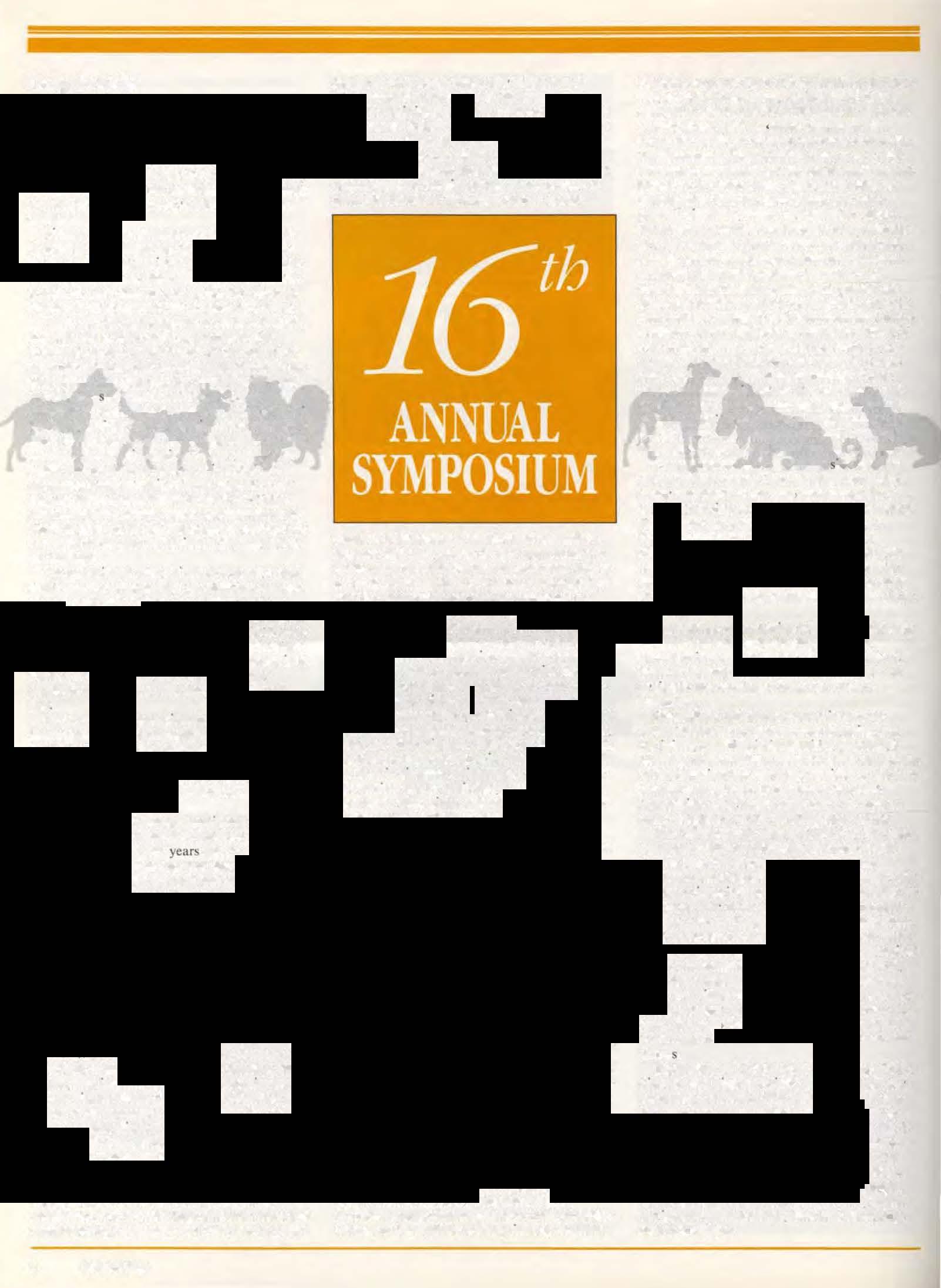
Hemophilia B, a clott1ng factor lX deficiency has also been identified In dogs and cats. though it IS not as common as Hemophilia A. Tests to identify carrier!> for both diseases are a\ salable free of charge from Dr. Dodd's laboratot).
Hemophilia affects an animal an various v.ays. There can be intermittent bleedmg into the JOints. resultmg tn 1mmob1hty, prolonged bleeding when teething. and the most dangerous of all. bleedmg into the bod) cav1ties or the central nervous system. If one has a dog with bemophtlia one hould never use it at stud as eve!) daughter will be an obligatory carrier. Von Willebrand's disease (VWD) is the most commonly inherited bleeding disorder in the dog. In Scottish terriers. Chesapeake Bay retrievers, and Germun shorthaired pointers. the disease is mhealled as an autosomal recessive. In this case. onl; those homozygous for the gene (having two carrier parents) show clinical signs. Both sexes can have the disease and both sexes can be carriers. In all other breeds it is inhented as an autosomal incompletely dominant trait. whereby homo1ygosity is lethal and heterozygotes can c1ther express the gene or disease to a varying degree or be a!>)mptomatic carriers. To date. 49 breed have been recognized to have VWD and the condiuon h� recent!� been seen in cat .
Expression of VWD varies in seYerit� ..lt is a dtsease \\ith h1gh morb1dity and relativel) lo" mortality," she said. "The animals can be fine for years and then suddenly have an episode triggered b; strelts, illness or trauma." vwn is most frequently seen in Doberman pinschers where 58 to 60 percent of the breed have the gene. It is also prevalent in standard poodles. Manchester terriers, Pembroke Welsh corgis. miniature schnauzers. Scottish terriers, golden retraevers. basset hounds. Shetland sheepdogs and Rottweilers.
6 Bellwether
However. a testing program witb rigorous sclcct10n agaJn!!>l carrier!!> and affected animals can rcuuce the ancidenct: tn a breed, a!!> demonstrated in Scottish terrier-.. Here the incidence once \.\i<iS44 percent. h ha:. been reduced to about 10 percent through te�ting and removal of affected antmals and carriers from the breedmg sto . �peciali1ed te�L) lhat me�ure the plasma level ol 'on Willebrand'!> factor are required to diagnose VWD. Routine clotttng tests are not diagnostic. Dr. Dodds' laboratory provides VWD testing free of charge.
VWD disease i� difficult to deal witb. Animals may have chronic mucosal bleeding into the bowel, manifested by bloody diarrhea. Also, such animals arc quite susceptible to the effects of parvovirus infections Animals wtth mild bleeding tendencie� often !-tuccumb to or sbo� more severe signs of the disease. Studtes have shown that there is a high mortality rate due to parvovirus di'>C:.t\e in Doberman pmschers and Rott\\eilers. breeds with .1 higher incidence of \WD. The di,ea.-.e also mantle.,ts it'Self earl\ in breeds "llich need cwppmg and docking. .� some c�ec; po'ttng 'c'ere problems. Dr. Dodds pointed out thilt 'impl) not breeding tho e puppies "'ho bled profu,el) during the e procedure� v.tll not eliminate the trait. "The �hole litter mu�t be te�tcd to idenufy earners."
Thyrotd function play· nn tmportant role in VWD. ··tr the animal is hypothyrotd, the d1sease will be more severe.'' 'he satd "Thyroid dysfunction affects clotllng bj producing reduced number-. of platelets and less -.on WiJiebrand's factor. Thus. a thyroid imbalance will promote the expre!'>sion or vwn. We are now seeing it agam with increasing f1equency in Scotlies and goldens. becau'>e of their mcreal>e in hypothyrotdi m.
Dr Dodds brief!} d1scussed mhented platelet function deJect' tn ouerhound., and bal>set hound'i. These .tre two different dil>orders and the carrier ..,tatu of breeding animals can be determined through speciali7ed te\u.
To eliminate or at leru.t reduce the incidence of these blecdang disorders. those working m breeds. \\nh such diseases should test all breeding stock. or else breed carrier important to the breed's future only to normal mates and screen their pups for the gent:. \!1ore than one breed ha� demon�trated. through a ngorous te�Ling program, that the incidence of these defect!!> can
EIPHinRaceHorses
continued from page2
Currently furosemidebtheonly permitted race day medtcntion for EIPH in 19 of the 22 statel> that have Thoroughbred racing. Pennsylvania. Nev. Jer-.ey. Delaware, and Mar)land are among them. Hor'>c� \\ith CIPH are admatted to a bleeder program and muM adhere to specific criteria establi,hed by the �tate. lhc drug is udministered four hour� prior to racing. and the horse i� �upen.i ed in a detentton barn until its start.

Th1s i<> a cumberorne and expen�ive procedure, and Dr. Soma is looJ...ing for ahernattves to prevem EIPH. Currently. he IS working with a number of bronchodilator::. to determine in the e\penmenta1 horse their effects on lung resistance and other respiratory parameters. "It is difficult to get substances deep into the airways when a nebuli7er i'\ used." he said. "We use an old method to make the horse breathe deeply. A Lube ts affixed to the breathmg mask, causing the ammal to inhale its own ca1bon dioxide. After about one minute it will breathe deeply and we adminbtcr the bronchodilator over a three-minute period." The researchers are
be reduced or eliminatell tf onl) clear stock is used or carriers arc brl!d under the comrolled circum�tance!) mentioned abO\e. Dr Dodds recommended th.tt club� 'pon or screening clinICS, similar to eye climes. to ident1f) mildly affected animah and earner�.


Immune-mediated blood dasea es are also a concern... I hesc arc on the mcre�e." she said. "Here the indtvtdual d�vdop-. antibodie� to 1ts O\\n tissues or lluids: It 11o ltJ...e an allergic reaction."
Immune-mediated diseases can affect platelets alone (autotmmune or immune-mediated thrombocytopenia, Idiopathic thrombocytopenia purpura) or red blood cells (autoimmune hemolytic anemia. immune-medialed anemia). Many cases involve destructton of both platelets and red blood cells. Immune-mediated diseases in general affect females over males (2: I) and there is clearly a famalial,genetic predi&positJon.
Pregnancy JS a major tngger. According to Dr. Dodds animal' with hormonal irregularities. abnormal heat cycle!., pyumetnt. pseudopregnane} and th) roid dy,funcuon are prime candidates for immune-melliated blood diseas�. particulttrl) if bred While in hypothyroid ammals this tendenc> can be controlled with a thyroid -supplement. the pred1sposiuoo can still be pru.�cd on to the nc\t gem:ration. She ad'i:,ed to not breed animab having experienced tmmune-medaatcd diseases.
lmmune-mediated blood disorders can also be triggered by v1ral infections. stress. the lymphoma-leukemitt comple'l and vaccination with modified live vaccine:;. "Vaccinations are a controversial subJect right now." �he said. ''Our work has shown that some indivtduals cannot handle the muluple dose combination vaccines at an early uge. The -vaccine or exposure to the street virus can tngger un immune reaction. Most liJ...el} these animab are genetically predisposed und '>0 ha\c an inherent susceptibility or wealo.ness. ll i' unfortunate that we usually don't know \\htch an1mab thec;e arc until a problem ame!-... �he �1lso menlloned that modified the virus rabies vaccine can trigger 1mmune-mediated blood disorders and recommend" the u e or killed \acctne to be administered separ�ttely from other boo�ter vaccines. Weak or sick puppies. such as those suffering from paras!le infection M diarrhea, or puppies and adults from families known to have
determining effect�. dose ranges and the most suitable compound. The next step is to determine whether it will lower the incidence of ElPH 1n affected antmals.
Dr. Soma is also investigating the u e of a transptrator. Thi:. eqUipment delivers completely humidified, warm air to a face mru.k and the hor�c mhalcs tht� for t"'o hours a day for two to three day!. prtor to a race. "Horses don•t object to it at all." he said "They doze and stand contentedly. breathing the warm.. moist air." This treatmem help!> the animal to clear foreign mutenal from It\ air passag�.
Another study by Drs. S\\eene} and Soma has sho�n that most horse at the racetrack ha\e 5igns of chronic bronchitis, which could potenually be helped by the humidified air. Researchers have found the preliminary data encouraging; '\Omc horses stop bleeding and improve their performance. ''These horses spend a great deal of time indoors, in dusty barns. inhaling all kinds of material which can set up an irritation," he said. "The tran!!>pirator facilitate� the removal of this material and better breathing. lt helps the horse to clear its lungs."
immune-mediated di'>eu.ses. should not be vac· cinated "hile ill. When rec<.nered, it is ad\isable to �eparate the par'oviru:, and DHLP vaccines when modified live products are used. The interval between vaccinations should be 10 to 14 day'> or more...When these ammals are stronger and older (after 12 \\Ceks of age) the� can be given the combined shot�. Tht� is JU t a precau� tion to protect those with a tendency to immune-mediated blood diseases ..
Dr. Dodd i� developing a new program called Pet Life-Line, a nat1onal project involving blood products for dogs, cats and horses. "Currently there are no blood products available on a national basis for animals;· she said. "We hope to provide, in a rew years. the same sen.ices as are available in human medicine for transrusions to animals. It is a much needed service and veterinary schoob ha"c begun to emphasize transfu ion medicine in anticipauon of these advances."
Dunng the quc:>tion and an�wer penod Dr. Dodd' dcscdbcll a stmple test which can bt: performed b} an 0\\ ner or \etennarian to determine \\hctb�r an aruma! has btcedmg tcndenciel>. "Place the dog on it!! s1de, cut a naiJ too short. lea"e it undi�turbed. and then monitor. the bleeding time. lf the animal b normal bleeding should stop within two to three minutes. E'en fhe to six minutes IS not abnormal. However. if it talo.es longer than that. there ts something wrong. Th1s Lest :,hould be performed prior to any !�urger} so that the veterinarian can be prepared for complications, particularly in breeds known to be susceptible to bleeding disorder!.."
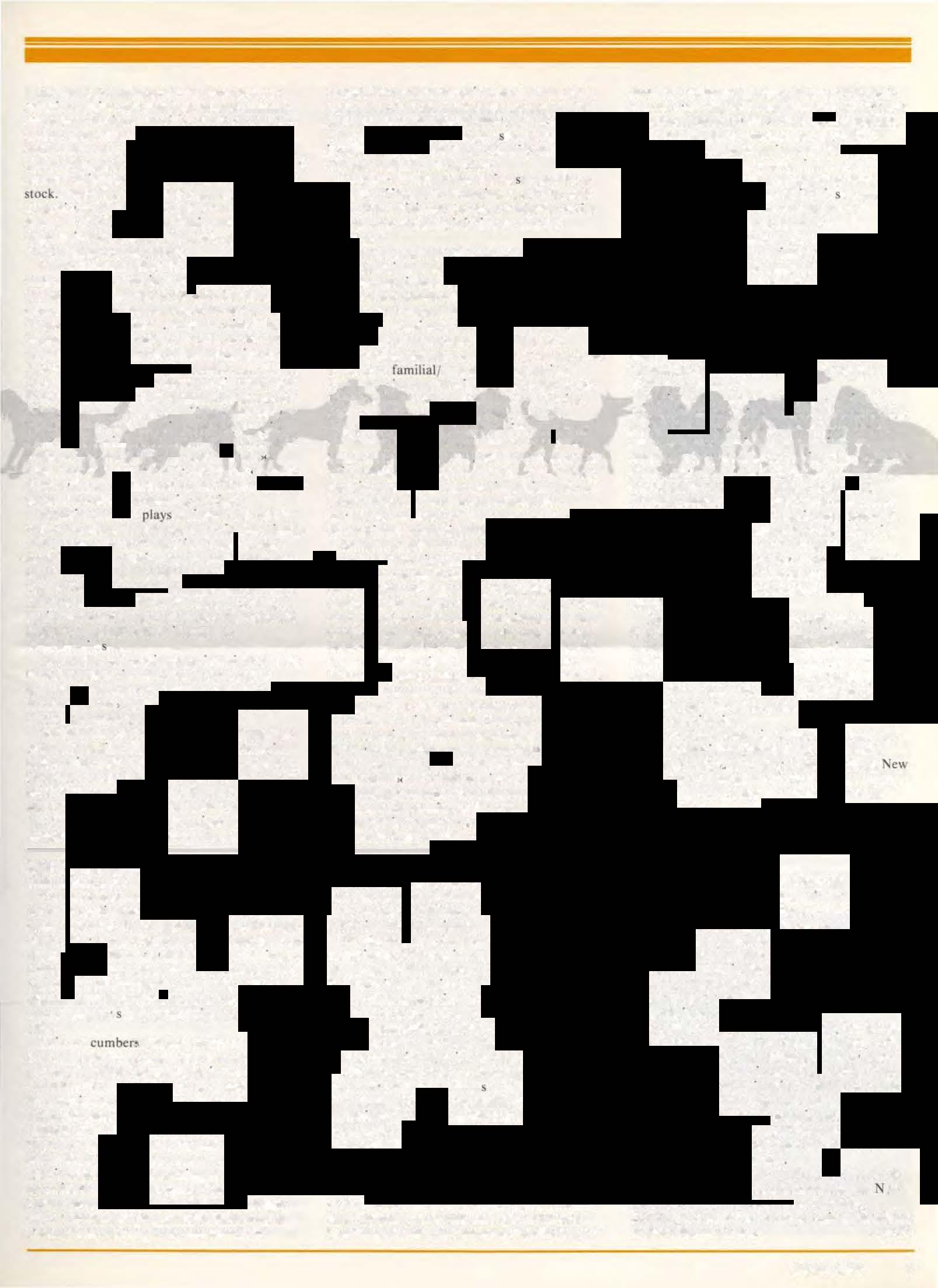
Dr. Ooddb' messHgc to the audience was to test breeding stock fo1 bh!cding dasorder!l. be a\\are of the increasing problem or tmmunemediated blood disorders. and to he cautious and not use affected animals in a breeiling program. Blood tests arc performed free of charge b) her laboratory and samples can be submitted by the vetennanan.
Dr. W. Jean Dodds IS adJunct assoc1ate profe!.sor of med1cine (hematology) here at the School. Chief. 1 ahorator) of Hematology, 'e'' York State Department of Health, Albany. and the current AKC delegate lor the American Pointer Club.
-H. W
Drs. Soma and Sweeney reel that this device might be valuable as tlO :1djunct1Ve treatment of animals with respiratory di�e�e and that it could be a great help for the treatment of foals with respiratory problems.
The primary sponsur uf much of the research is the Pennsylvania State Horse Racing Commission. which is one of the first. and one of the fe\\, Racing Commi��ions which sponsor research m the Thoroughbred.
In additiOn to the EIPH research. Dr. Soma in collaboration with Dr. Peter Felsburg. a clinical immunologist. has developed a ne'' technique to detect drugs m blood and urine. The basis i� the use of anubod1cs to detect the presence of drugs and is a system which uses a color change to determine if a drug ts present. So far one test has been developed for one specific drug. He hopes that thi� \\ork will lead to a quick method of screening
Lawrence R. Soma, V.M.D.. is Professor of Anesthesia and Clinical Pharmacology at ew Bollon Center, and Corinne R. Sweenev. D.V.M.• is a Leclllrcr in Large AmmaJ Medicine at New Bolton Center. -H.W
- ------- -----
Spring 1986 7
Tucker, aPennDog
All hi::. life, Tucker was a Penn dog. When l first started to teach in 1975. he ran away from the house and showed up in my class. and from then on. I just took him with me. He got to knov\ how long 50 mtnutes was and would stand up and shake to signal me that it was time to top. And if for some reason 1 left him home, I'd more often than not fmd him on the steps of College Hall-or get a call from the Dean's Office to come pick btm up.
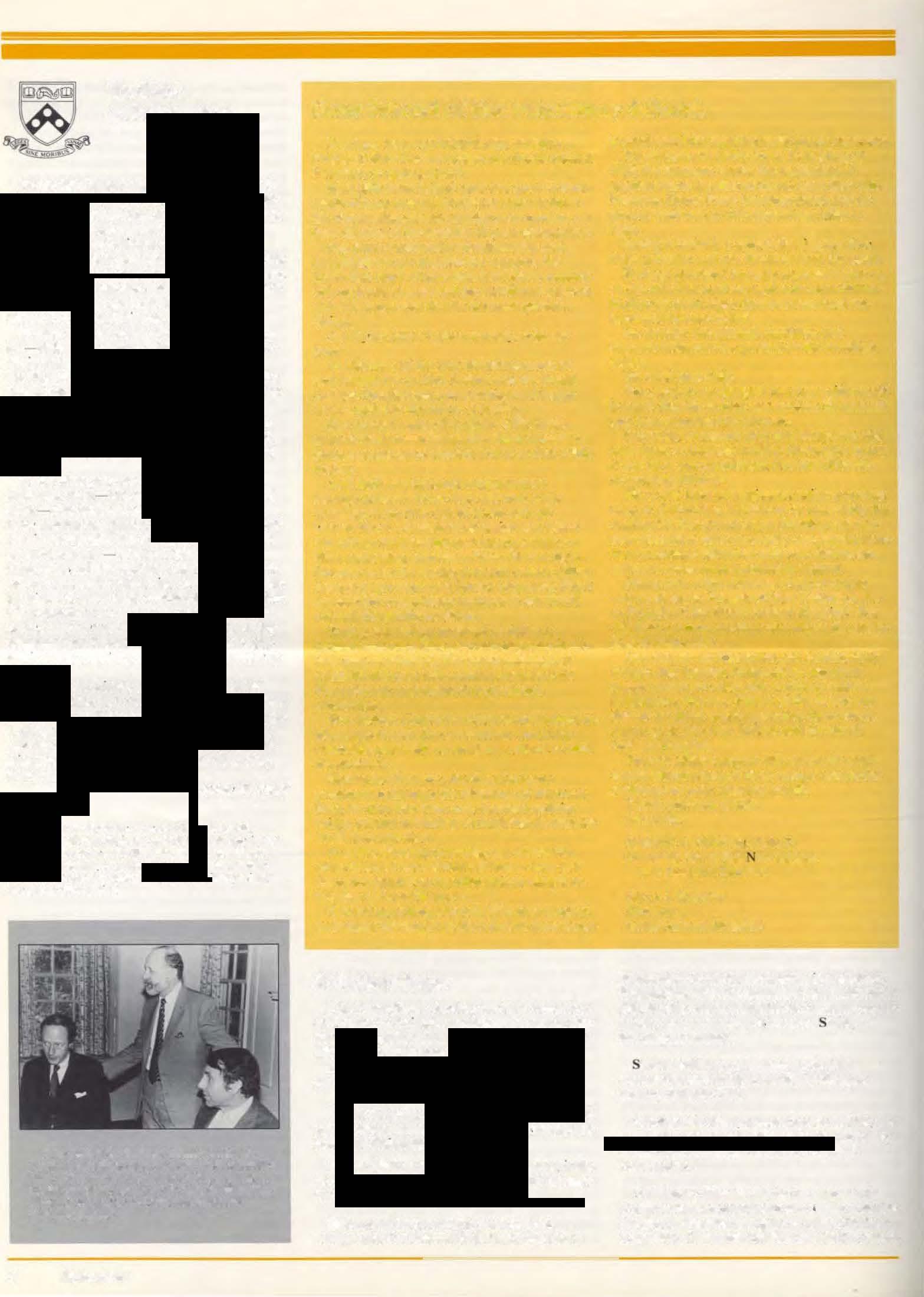
He had earlv contacts with the Vet School, too abdominal surgery after he impaled himselfJUmping a fence and Lreaunent after a bicyclist hit us both crossing a street. A generation of Penn history and Am Civ students knew Tucker and in 1979 even tried to get him to march in the graduation procession. Right up until his death J !ilill had people l didn't know come up and greet him when we were walking together.
By the time you met him, he had stopped coming to class the walk to campus was too much (the lecture� too repetitive'!). And he kne\\ Jessica had pushed him out of the central �pot m famil} Life. But you helped give his life the proper finish we had a few months to make a fus of him and help him forget he had lost the center. as well a� ume to get used to losing hun. I'll never have another dog like Tucker. I'll probably never e\cr meet one. and I have kno"n and O\\ned a lot of dogs. As one of my colleagues put it year::. ago. Tucl.er \\as "a per�on 111t.l dog �uit: HL dtdn't e\en kno\\. hO\\ to bark.
�ome of his fncnth asked how they could remember him. �o I thought that given his Penn connections and his ::.pedal connection with you in the end. sending contributions through you ''a" the most appropriate gesture. 1\nd 1 shall jom them in hopes that �orne other deserving mutt�, may be treated �o well-
-Dre11 G. Faust
fdnor-, note: Twl..t'r\tmllt'f11rme tim lt·tu!r '" f>r. Wu·ltltm .�lc'lnher�. Prr•/t''"" uml Clue/ajtilt',\t·tmmof \,.,,,,,.){, m tht· Sclwal.Tht•Sdmnlha\t\luhlislredcJ mt·moriui prugrom(ordt•tt"ll!>t>dpc>rs. andtirecomrihuliWI\ lwlp 1n pm\'idt• httllt'rfOrefm the ummolpuu�nts hrtliiKhl to 1heJwsptlal.
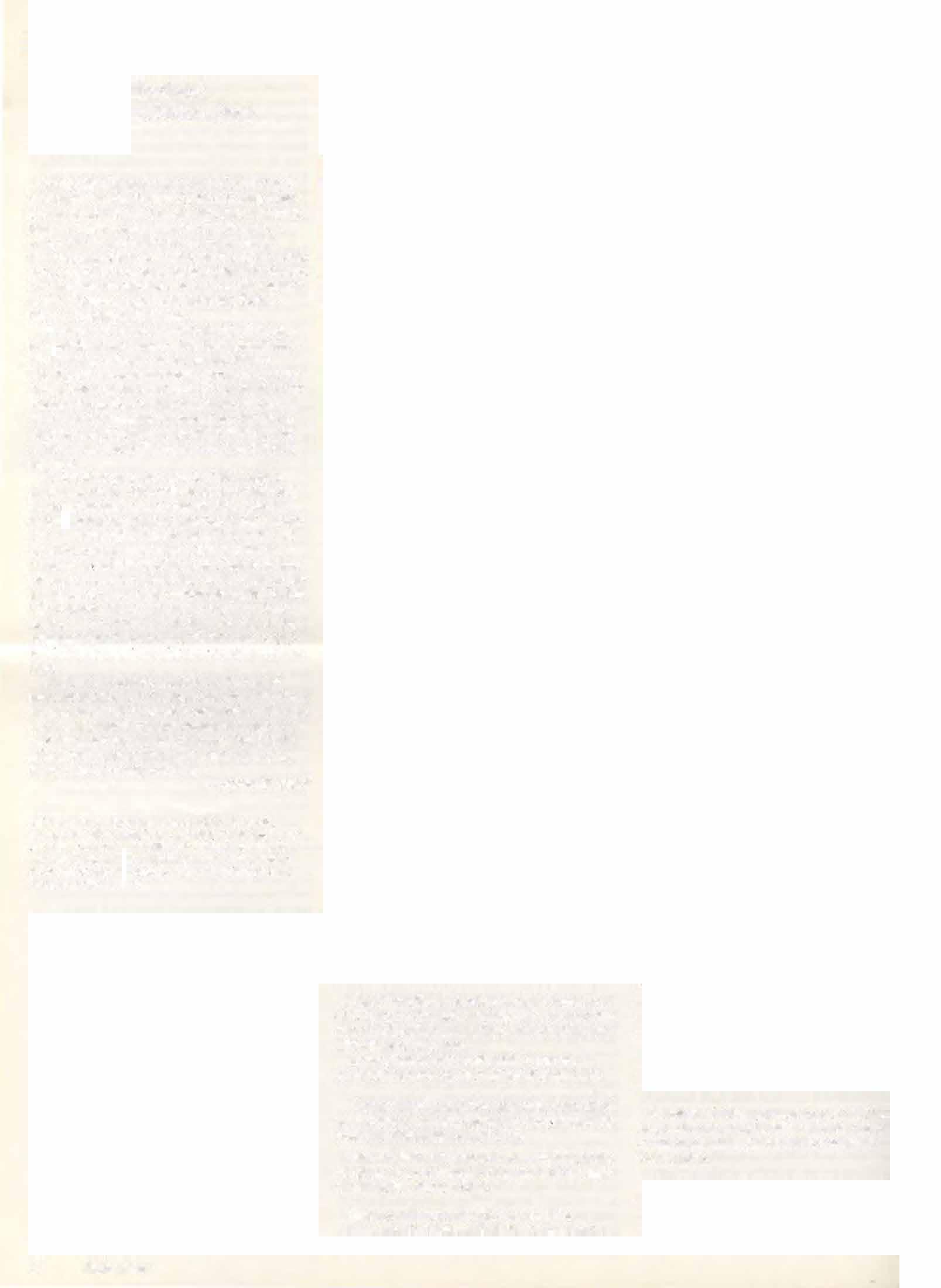
DearFriendoftheVeterinarySchool,
You have been our faithful allv. as either a Friend of '!'ew Bolton Center. the Small Animal Ho�pital. or perhaps both
Your gifts have helped save and protect thousands of large and small animal patients from life threatening d seaseor injury. As owners. we ha\e aU reaped the benefits of your compassion
You have re�ponded enthusiasticaJty and unselfishly to our requests for support. We know that those of you \\ho have given recently will understand our need for additional support and will accept our thanks for your previous givtng.
But{f 1vuhal'en'tf(iwn recemlr. ''lrynut now?
At this time of the year the phenomena of ncv. animal life at New Bolton and the Small Animal Hospital arc a fascinating and happy counterpoint to the work of healing.
But accompanying thi� spate of life beginnings is an increase in injuries. Warm weather alway� mean� more activity. All of us feel a little friskier.
1\nd both our hospitals experience an upsurge in cases. Your dogs and cats begin spending more time out of doors and are v ulncrable to a multitude of maJor and minor hazards to their health: paw injury. automobih:s. poi::.oning, hotulism. Fleas. Even a fight. Routine visits for testing for such �crious affiictions as heartworm and Rocky Mcluntain Fever account for a significant increase in the Small Animal Hospital's cascload.
Spring also brings renewed anxieties to farmers who ma� face a devastating year ifdi<;ea.-.e runs unchecked. fhe latest outbreak of avian flu this past fall continue:s to haunt the Pennsylvania and regional agricultural economics.
�C\\' Bolton Center has been working hard on thi� major threat. Our researchers are under enormous pre.,surcs to accelerate cffons to halt the problem
Spring is. of course, the time for horse owners to redi�cover the pleasures of the track. fteld. or ring. But here. too. renewed activtty brmgs painful reminders of fragilitic::. in animals of all ages and sites.
h seems like onl} yesterday we remember v.ht:n beloved and celebrated horses were put down for injuries as heartbreakingly 11oimple in humans ru; bone fractures
But today, orthopedic rehabilitation ::.urgical techniques developed at �e\\ Bolton have large-
Scholarships
The Pennsylvania Society for the Prevention of Cruelty to Antmab recently made a contribution of $10.000 to the ::.tudent loan fund for the 1985-86 academic year.
A donation to the scholarship fund was received from the Chester Valley Kennel Club.
Wayne Johnson and Evelyn Crish, both thirdyear students. are the recipients of a cholarship from the Plamfield Kennel Club.
Martin McGuire, a fourth-year :;tudenL ts the recipient of a scholarship from the Mid Susquehanna Valley Kennel Club.
Beth Ann Ferry. a fourth-year �tudent, received the Dr. Samuel F. Scheidy Memorial
ly eliminated the need for such drastic measures. Yet ahvays new perls arise. The �prng of 1986. for instance. marks the beginning of another \\'arm weather cycle we must face with Potomac Horse Fever looming ahead and no proven antidote� to this mysterious killer in sight.
Spring s indeed. a mixed blesstng for l\e\\ Bolton Center and the Small Animal Hospital.
Perhaps you have brought your animal to us at th ::.time last year or maybe the year before In the two years since then our case load has increased bv over 3.000!
No \\onder our clinical teaching, and research resources arc pushed to the breaking point
We need your help.
For our part we pledged that your gtfts would be used directly to treat and protect the animals you ha\e entru�ted to our care.
But sadly, in accord with this pledge, we will soon have to suspend mailing Bellwether to you if you have not contributed to either Friends program in 1985-86.
We would love to contmue sendtng you every issue of Bellwether. but due to its popularity the mailing list has grov.n huge. Printing and postage costs have ri�en so steeply as a consequence that we cannot afford to �end you Bellwelher, unless we have your continuing support.
Please take a fev. moments right now and write a check to Friends of New Bolton Center or rricnds of the Small Animal Hospllal. You will lind a return envelope secured in the centerfold of &1/wethf'r.
'tou may be an equestrian. cat fancier. dairy farmer, dog breeder. birdwatcher. first time puppy owner, or elder with a trusted animal companion. but as a Friend of the Veterinary School we think you11 agree that there arc no places quite like Ne\1. Bolton and the Small Animal Hospital.
Your steadfa11ot support will ensure the continued cffecti\eness of these unique enterprises dedicated to your animals' health.
Thank you very much
Sincerely.
RidrardA. McFt·e/.1, V.M D.
A-.sociate Dean For ew Bolton and Hospital Director
Barry J Stupim• Director
Small Animal Hospital
Scholarship from the Pennsylvama Veterinary Foundation. The Dr. Samuel B. Guss Memorial Scholarship. made available by the same organi7ation. was awarded to teven A. take, a fourth-year student.
teveo Wilson, a second-year student. received a scholarship from the Burlington County Kennel Club.
Carolyn M. Glass. a second-year student. wa::. awarded a scholarship offered by the Auxiliary to the Massachusetts Veterinaf) Medical Association.
A Salsbury Scholarship in lhe amount of $1,000 each was awarded to five enior students: Jocelyn L. Bezner, Margaret N. Bli�. Doris A. Cappiello, Giancarla Chieffo, Bonita E. Conard.
8 Bellwether
Dran Rob«t R. Manhak(c�nter) &lftlllh� IU�h at a lunchfnn held in honor orthe �lablisbment or the Marylin M. Simpcwn Proreuonhip in Equine Medicine. Seated to bi'i riaht i!l William k. Slmp\on and to bb, ldt tTniverslty PrHident Sheldon Hadmey.
ThankYou
Dunng the past 18 months man} club� have provided generou� flnancial support to the School and to VH UP. Tile!le funds have enabled us to purchase much needed equipment. pro\'tde financial aid to our students. study specilic discases. and help many of our smaJ\ animal patienb.
Wethank thefollowingclubs:
Atrcdale Terrier Club of Greater Philadelphia. PA.
Allentown Dog Training Club. PI\.
American Lrish Seller Foundation.
Amencan Shetland Sheepdog Association.
Bayshore Companion Dog Club. 1\I
Belgian Sheepdog Club of America.
Berks Count> Kennel Club. PA
Bryn Mawr Kennel Club. PA.
Bucks County Kennel Club, PA.
Buck!. Mont Owner Handlers Association, PA.
Bull Terrier Club of Philadelphia, PA.
Burlington County Kennel Club. N.J
Capital DogTraining Club of Washtngton. DC.
Centennml Shetland Sheepdog Club ot Greater Demer. CO.
Central Illinois Shetland Sheepdog Club. IL.
Central Penn Collie Club, PI\.
Chambersburg Area Kennel Club, PA.
Chc,apeake Kennel Club. MD.
Che�tcr Valley Kennel Club. PA.
Chlcagoland Shetland Sheepdog Club.. IL.
Clarb\ ille Kennel Club. T�
Collie Club of America.
Collie Club of Northern New Jersey.
Dandie Dmmont Terner Club of 1\menca.
Dcla\\are Count) Kennel Club. PA.
Dela\\are Valle� 'iorhhtre Terrier Club. PA.
De\on Dog Show A:.:.ouation. PJ\
Dl'!ltnct Area Sighthound Assoctauon. DC.
Doberman Pinscher Club of Connecticut and Nt'\\ York.
Dog Owners Educational League. '\J.
Elm Cny Kennel Club. CT.
StudyofCaudalCervical Spondylomyelopathy UsingtheCTScan
A number of dog breeds are affected b} Caudal Spondylomyelopathy, commonly caJled "Wobbler Syndrome.·· The disorder is most frequently !leen in Doberman pinschers and great Danes. Two surgeons here at the University of Penns\lvania School of Veterinary Medicine are conducting a pilot stud� to determine the value ofComputed Tomograph) (CT) scans to rncrease our under tanding of this dtsorder. Dr. Nichcllas J. H. Sharp, a visiting surgeon from the University of Liverpool. England. amJ Dr. Gail K. Smith, Assistant Professor of Orthopedic Surgery here at the School. have received a !.mall internal grant to help conduct tbe ill\csttgation.
"The e funds will enable us to study live Doberman pinschers both before and ufter they undergo surgery for the condition," said Dr. Sharp. The djse&e commonly affect middleaged Dobermans between four and eight years of age. and males appear slightly more susceptible. Dr. Sharp explained that m affected arumals the spinal cord is compressed in the neck as a consequence of unstable vertebrae. "Most of the!le dogs at first show only slight signs." he �aid. "Their gait rna) be slightly different. but as the di�ease progre!lses, they will become increas-
Garden State Siberian Husky Club, .1. Giant chnauzer Club of America.
Great Barrington Kennel Club. CT.
Greater Lancaster Fetme Fancter • PA
Great Milwaukee Shetland Sheepdog Club. WI.
Greater Philadelphia Dog Fancier-. Association. PA.
Greater Venice Florida Dog Club, FL. Greyhound Club of America. Harril;burg Kennel Club. PA.
HyattsvtUe Dog Traintng Club. MD
Interlocking Shetland Sheepdog Club. IL.
Irish Wolfbound Club of Delaware Vallc\i, PA.
lrb.h Wolfhound Club of Greater ew York.
Jad. Rmsell Terrier Club of America.
Kanadasaga Kennel Club. NY.
Kennel Club of Bever!� HiJis. CA.
Kennel Club of Buffalo. 1\Y.
Kl!nnel Club of Phlladelprua, PA
Kennel Club of Texarkana. TX.
Lancaster Kennel Club. PA.
Langley Kennel Club. VA.
Laurel Highlands Kennel A!.sociation, PA.
Lehigh Valley Kennel Club. PA.
Ltbcrty Trail Cat Fanciers. 1\J.
Lochland Shetland Sheepdog Club, M�.
Long Island Kennel Club. \JY.
Longshore Southpott Kennel Club. Cl.
Lower Bucks County DogTraining Club. PA.
Lu7crne Do_g Training Club. PA.
Multese Club of Greater Miami. FL.
Manatee Kennel Club. FL.
Muryland Cocker Spaniel Club.
Meadowbrook Cocker Spaniel Club. CT
Mtd-1-Judson Kennel Club. NY.
Mitl-Sust1uehanna Valley Kennel Club. PA. Mi,pillion Kennel Club. DE. �auonal Capital Kennel Club, DC.
'\c'"Jer e} Bo,cr Club.

Kcw-Pen-Del �ewfoundland Club.
Newfoundland Club of America. Norwtch and Norfolk Terrier Club.
Nov�t Scotia Collie and Shetland Sheepdog Club.
Okl English Sheepdog Club ofAmertca.
ingly more uncoordinated. Most dogs arc not in pain. although they may become �uddenly paralyted. This is frequently seen when a disc gives �ay. prolapsing into the neural canal an\J damagmg the spinal cord."
"Treatment is the stabilization of the affected bones in the neck." said Dr. Sharp. ''There are many techniques but none are considered ideal." ln this study the two surgeons will evaluate 1he animal by doing a myelogram. this heing an x-ray taken where the spinal cord has been outlined with an opaque dye. In addition. aCT scan will be performed which permtts a view of the affected vertebrae in cross-section. showing the compression of the spinal cord more clearly than the radjograph. After these two tests. one of the standard surgenes will be performed. "Generally we decompress the disk <and then fu-.e the vertebrae to �tabilize the area." fhe animal will be examined later in the recovery period again employing a myelogram and aCT sc:.tn.
''By looking at the condition prior to and after 'lurgical treatment. we hope to ascertain whether the procedure accomplished the goal of reducing the pre sure on the cord and !ltabilizing the affected area of the ned •• Dr. Sharp said "The CT scan allows us a really close and detailed look in a way noL used before in this condition and very rarely at all in the dog's spine."
Both surgeons would l1ke to sec Dobetman
Penn Ridge Kennel Club. PA.
Pensacola Dog Fanciers. FL.
Penn 1 rcaty Kennel Club. PA.
Plamlield Kennel Club. "-:J.
Potomac VaUe) Standard SchnauLer Club. MD.
Rhodesian Rtdgeback Club ofthe USA.
Rockland County Kennel Club. NY.
Salisbury Maryland Kennel Club.
Sand and Sea Kennel Club, �J.
Sara Bay Kennel Club. Inc FL.
Schoole}'s Mountam Kennel Cluo, '\.1.
Shetland Sheepdog Club of Dec; Moine�. lA.
Shetland Sheepdog C'lub of Georgta.
Shetland Sheepdog Club of HouMon, rx.
Shetland Sheepdog Club of Miami. FL.
Shetland Sheepdog Club of Mid-Miami. FL.
Shetland Sheepdog Club of PA l\J Df.
Shetland Sheepdog Club of St. Loutl>, MO.
Shetland Sheepdog Club of Sou1hern California.
Sbi Tzu Fanciers of Greater Miami. FL.
Siberian Husky Club of Delaware Valley. PA.
Shoreline Shetland Sheepdog Club. T'<.
Somerset Count> Dog Obedience Club. '\J.
Somer et Hills Kennel Club. '\J.
S()uthern Florida Mtntature ebnau7er Club.
Southern Ne\\ Jersey Cocker Spamel Club.
Suourban Dog Training Club. PA.
Tampa Bay Area Shelland Sheepdog Club. FL
Tide\Htter Kennel Club of Virginia.
Lnion County Kennel Club. NJ.
Upper \1arlboro Kennel Club. MD.
Virginw Beach Kennel Club, VA
Wallkill Kennel Club. NY.
Watchung Mountain Poodle Club. NJ. Wuterland Retriever Club. PA.
Western Michigan Shetland Sheepdog Club. MI.
Wtlmington Kennel Club. DE.
Etltltlr:�nore:71w ahm·e /I\I IHH compile(/jmm nur rec·tml.\c•overing tltt• peruulcifJuly /984 JllrMtlflt
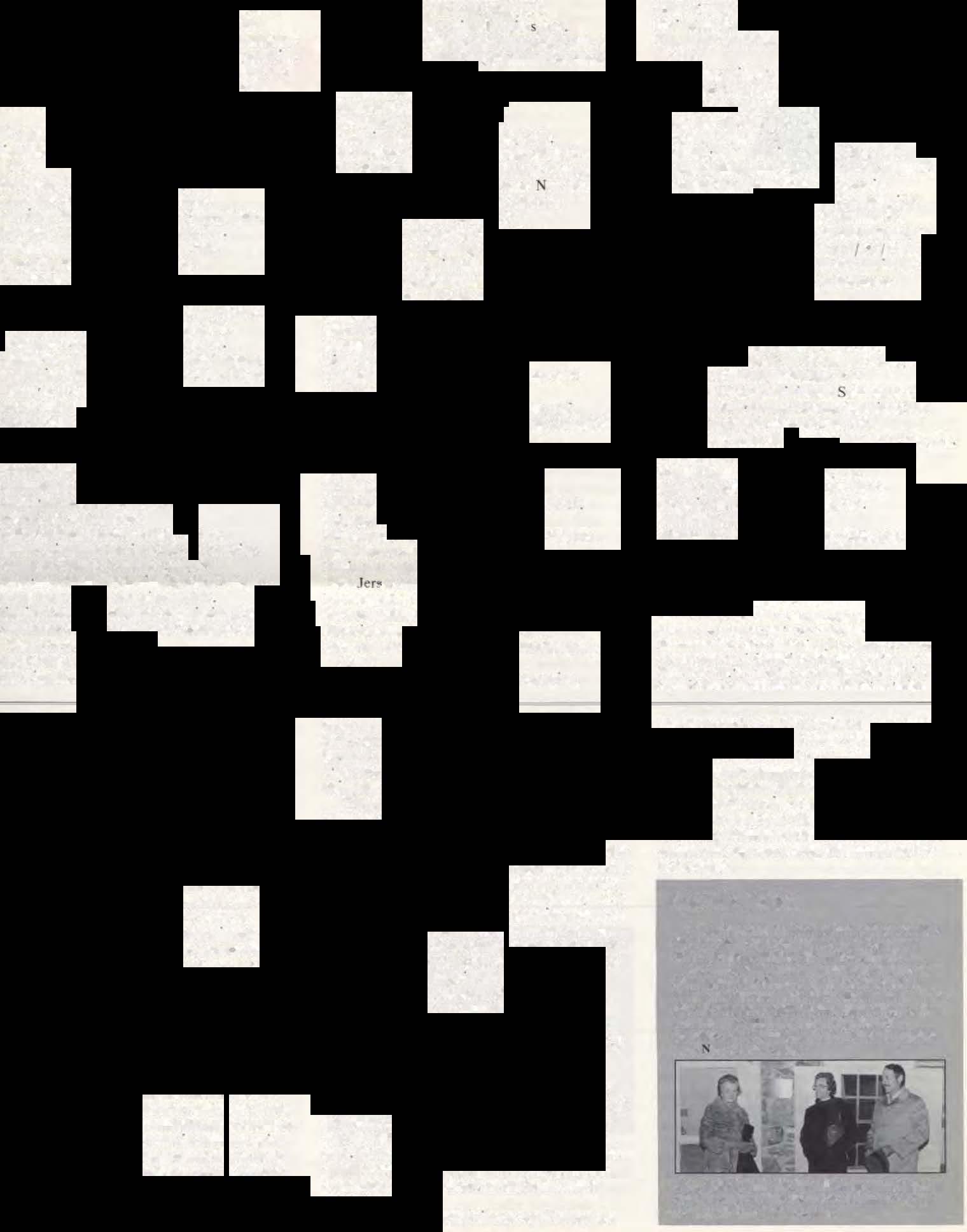
Dt'C'I'mhu 1985. A., it tukt·l tm1e for uJfl}lro ht• entl!red IIIIo our .\ystem. 11t:rpoJ.sthlt- Jluu club.� wlthh gaw in f>et·emlwr ma1 1101 app!!ar tm Jhe list. l�t- apalogtu 71zese urxom:oriuns willappt•or on our ne.\1 a<J..nnnlt'dJl,l!ntt'lll. pinschers with Caudal Cerv1cal Spondylomyelopathy for this study. There will be no charge for the CT Scan. and it is hoped to be able to obtain more funding to extend the �tudy beyond the present limu of fi,e dogs. Information about the proJect can be obtained b) contacting Dr. Smtth or Dr. Sharp nt the School of Veterinary Medicine. University of Pennsylvania, 3850 Spruce Street, Philadelphia, PA 19 104-6008.
Dedication
The�adj8centlolillrAllamHOUlealNew Bohon Ceattr wu dedicatedasHill Coctap on Oec.6, 1915, in memory of Joba J.Hill,Ill.
Mr.Hill.1 dflllated horseman. wu mnltr of Nantmeal Hunt �•rna.alllflftberuftile Radnor Hunt.aad"icepi'NdenlofThe Dnon HOfM Sho... HrwualllelllbtroCTilePhiladdpblaSoclttyfor PromotiatAcrkuh�nandtheQuakerCJtr Fu.aen.. ud • arut frieadof1hrSchool.partkulert, ew Bohon Center.
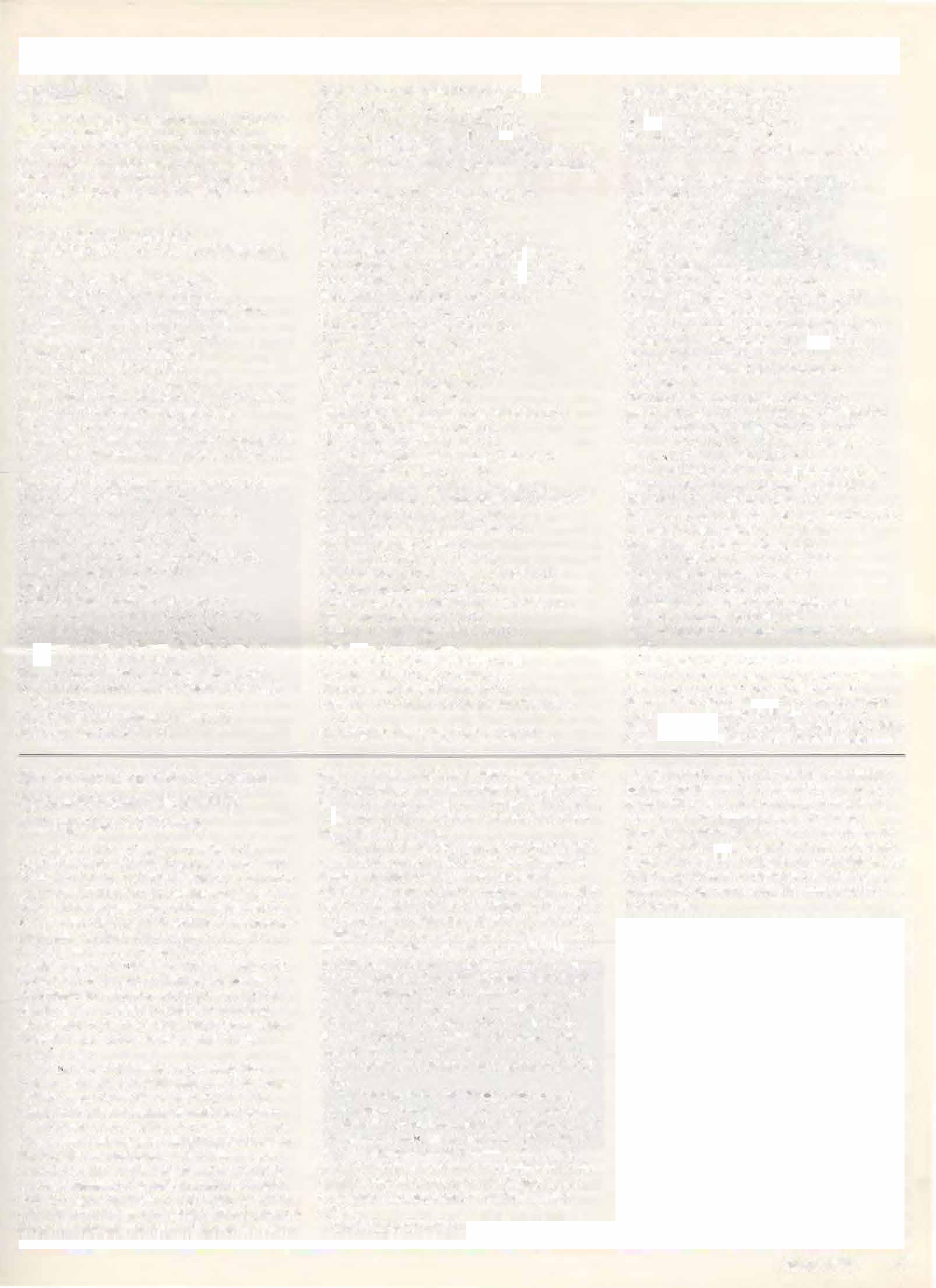
Spring1986 9
Mn. John J. Hill,Ill,Mrs. D. Rory MecDoneld and Mr. JohnJ. HOI.IV.althr dedlcatlon ofHIU CoHaae•• nBohon C'..mtn.
Heartworms
Heartworm infection occurs in the dog throughout the United States and parts of Canada, particularly in warm, mosquito-infected areas. Infective heartworm larvae develop in mosquitoe!l and are deposited in the skin of the dog following the bite of an infected mosquito. Afterseveral months of development, immature worms enter the bloodstream. Adult worms, which may reach a length of five to twelve inches. are found in the heart and lungs. Infected dogs may tire easily, have a chronic cough and lose weight. Diagnosis is made by detecting the microscopic larvae (microfilariae) in the circulating blood and by blood tests to detect antibodies or worm protein. There is a nonpathogenic nematode. Dipetalonema retonditum. which also produces circulating microfilariae. These must be differentiated from the microfilariae of the heartworm. Dirofilaria immilis. Microfilariae are not always found in the blood of heartworm-infected dogs-there are seasonal and diurnal variations-so a negative test should be repeated if heartworm disease is suspected. Most dogs with heavy heartworm infections have changes in the heart and lungs wruch may be detected radiographically.
Dogs infected with heartworm may be treated with drugs to destroy the adult worms. Infections may be prevented by daily treatment with a drug that prevents larvae introduced by the mosquito from developing into adult worms.
Diethylcarbamazine (DEC) is available in several forms: tablet!>, liquids and powders. Treatment should be started at the beginning of the mosquito season and continue for several weeks after. ln warmer climates. it should be given year round. The drug must be given daily as it bas no residual activity. A drug under study by the FDA. Jvermectin. appears to be effective as a prophylactic agent when given at monthly intervals. However. there have been severe reac-
FieldTria1ingAn Overseers Hobby
Current Gordon seller field trial rankings include three dogs owned by Mrs. Gwynne G. McDevitt. a member of the School's Board of Overseers. "I participate in six to eight field trials each season," said Mrs. McDevitt. "Events are held March to May and September to December. A bit of traveling is involved as the trials are held in many different states."

Mrs. McDevitt's young dog. Smokerise Shadowfax, ranks frrst in the Open Puppy and the Open Derby standings. Recently he received the National 1984-85 Field Awards (American Field and AKC) from the National Gordon Setter Club Association. Inc.. a member of the American Field Trial Clubs of America, Inc. Shadow was handled to four points toward his
tions to this drug in some breeds, including death. lt cannot be recommended without this warning. At the present time. it is not approved for use in dogs but is FDA-approved for horses.
It is important that preventive treatment with DEC should not be given to dogs which have circulating microftlariae as this may produce severe anaphylactic (i.e.. allergic) shock. Have a blood sample checked before beginning treatment. even if the dog was on DEC the previous year.
YourCat'sTeeth
The cat has 30 permanent teeth and 26 deciduous ("baby'') teeth. Because thejaw bones of the cat are rather short, the number of premolars and molars is reduced when compared with the dog. (The dog has a total of 42 permanent teeth). The cat has six incisors (front) teeth in the upper and lowerjaw, used for biting and gnawing� four large canine Leeth ("fangs") for seizing and tearing food; six premolars in the upperjaw and two in the lower and two molars in the upper and lower jaws. The molars are used for shearing soft tissue and bones.
The deciduous teeth erupt aL about three weeks of age and are replaced by the permanent teeth at about six months of age.
Tooth care should begjn at an early age. Chewing on hard toy helps keep the deciduous teeth clean. The eat's teeth should be checked at about stx months. If a baby tooth does not falJ out. your veterinarian can pull the tooth to allow permanent teeth to grow in normally.
When a cat is fed only soft foods, it will not chew enough to clean its teeth. Feeding dry food most of the time will help prevent gum disease. Periodontal disease is a major cause of bad breath and loss of teeth in cats. If there is a
yellow build-up, this is an indication that dental cleaning is necessary. This is best done under general anesthesia and in some animals it should be repeated yearly.
When the teeth have been cleaned (calculus and plaque removed). your veterinarian may recommend "brushing" the teeth once or twice a week-ideally daily! Wrap a finger with a soft washcloth and brush from gum line to tip of tooth. lf you do this gently and follow lhe procedure with praise and a treat. the cat will become accustomed to oral care. Do not use human toothpaste. Start with plain water or water with a bit of salt added. Your veterinarian may recommend using a medicated brushing solution if gum disease is present.
Don't let gum disease get out of control. Check your eat's mouth frequently. If the gums are ignored, bacterial infection may set in. the gums swell and bleed; the breath becomes almost unbearable, the teeth loosen. and eating and self-grooming become painful. This can be avoided b} keeping the mouth clean. Gum dii)� ease in cats can cause severe problems, more so than m dogs. Two major sources of the pain associated with gum disease are ''neck lesions" (erosion of part of the tooth at the gum Line, which exposes sensitive dentin) and spreading soft-tissue ulcers that can cause pain when the mouth is opened.
Cost is always a factor when considering professionaJ lTeatment. If the teeth are kept dean by brushing and the cat has something hard to chew, periodontal disease may be avoided.
Because some cats refuse to eat or drink due to severe gum disease, and because severe gum disease is much more difficult to treat in cau than in dogs. gum disease in cats is the subject of a current research project at VHUP Headed by Dr. Colin E. Harvey, Professor of Surgery, the project includes progressive clinical and radiological examinations, detailed bacteriological and virological examinations (performed at the University of Pennsylvania Dental School
In 1984 the AKC awarded 688 F.Ch. titles (Amateur and Open), and there were 114.204 starters (dogs entered) for the year. For comparison, that year 15,553 conformation titles were awarded. with L 133,084 dogs competing at allbreed and specialty shows.
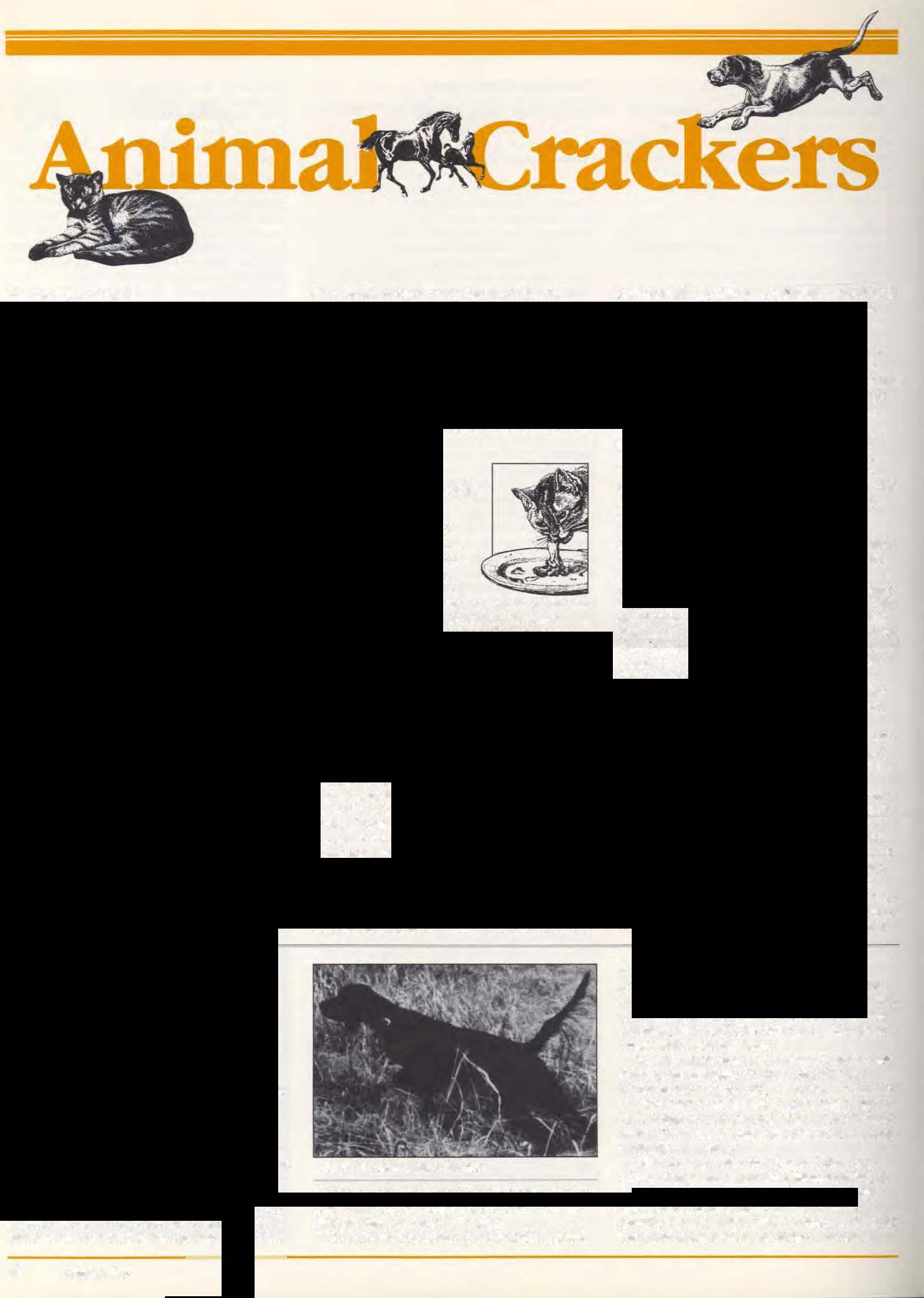
It takes much time and patience before a dog is ready for the field. "l train with Thomas Getler of New Egypt, NJ." she said. "lt is better to work with a professional when beginning to train a dog as one can sometimes teach it incorrectly. Then considerable time has to be spent to undo the mistakes."
It
Field trials usually are two- and three-day affairs. Dogs are entered in different stakes, as the classes are called, depending on their age and ability. At field trials Gordon setters, a pointing breed, must exhibit a desire to hunt, be bold and independent. yet obey every signal
10 Bellwether
Smokerise Sluldowfs.u in the field
Field Champion Litle by Mrs. McDevitt. "I have high hopes for this dog, and I think he will be able to attain the title,'' she said.
is not easy to make up a Field Champion.
and the University ofLiverpool in England. respectively} and treatment.
This project t supponed b)' grants from the Winn Foundation for Cat Research, IBM Corporation. H. Schein, Inc., and a private donor. Appointments for examination of cats with oral or dental disease at VHUP may be made by calling 215-898-4680.
MiscellaneousClass

At AKC shows. there are eight breeds which may be shown in the Miscellaneous Cla5. These breeds are represented by an active parent club maintaining a breed registry. with serious and expanding breeding activity over a wide geographic area. Breeds m the Miscellaneous Class are not eligible for championship pomts. They must have an lLP (Indefinite Listing Privilege) number issued by AKC.
When the AKC's Board of Directors is satisfied that the breed is continuing a health}. dynamic gTO\Hh. it may be admitted to the Stud Book and be able to compete in regular classes at dog shows. At the present time, there are 129 breeds eligible to compete for championship points.
V.M.D.orD.V.M.?


There are 27 Colleges or Veterinary Medicine in the United States accredited by the American Veterinary Medical Association. Wisconsin will graduate its first class in 1987. The University of Pennsylvania grants a V.M.O. (Veterinariae Medicioae Doctoris) degree. probably because of the close association of the Veterinary and Medical Departments. Graduates of all the other Schools receive the D.V.M. degree.
University oi Pennsylvama graduates can be recognized by their degree. The V.M.D. has been awarded to 4,064 graduates. beginning with lhe first class in 1887. The requirements for V.M.D. and D.V.M. are essentially the same.
IL might be pointed out that if..Dr.'' is used before a name. the academic degrees arc not included after the surname. To be grammatically correct. the name should be John Doe, V.M.D. or Dr. John Doe, never Dr. John Doe. V.M.D.
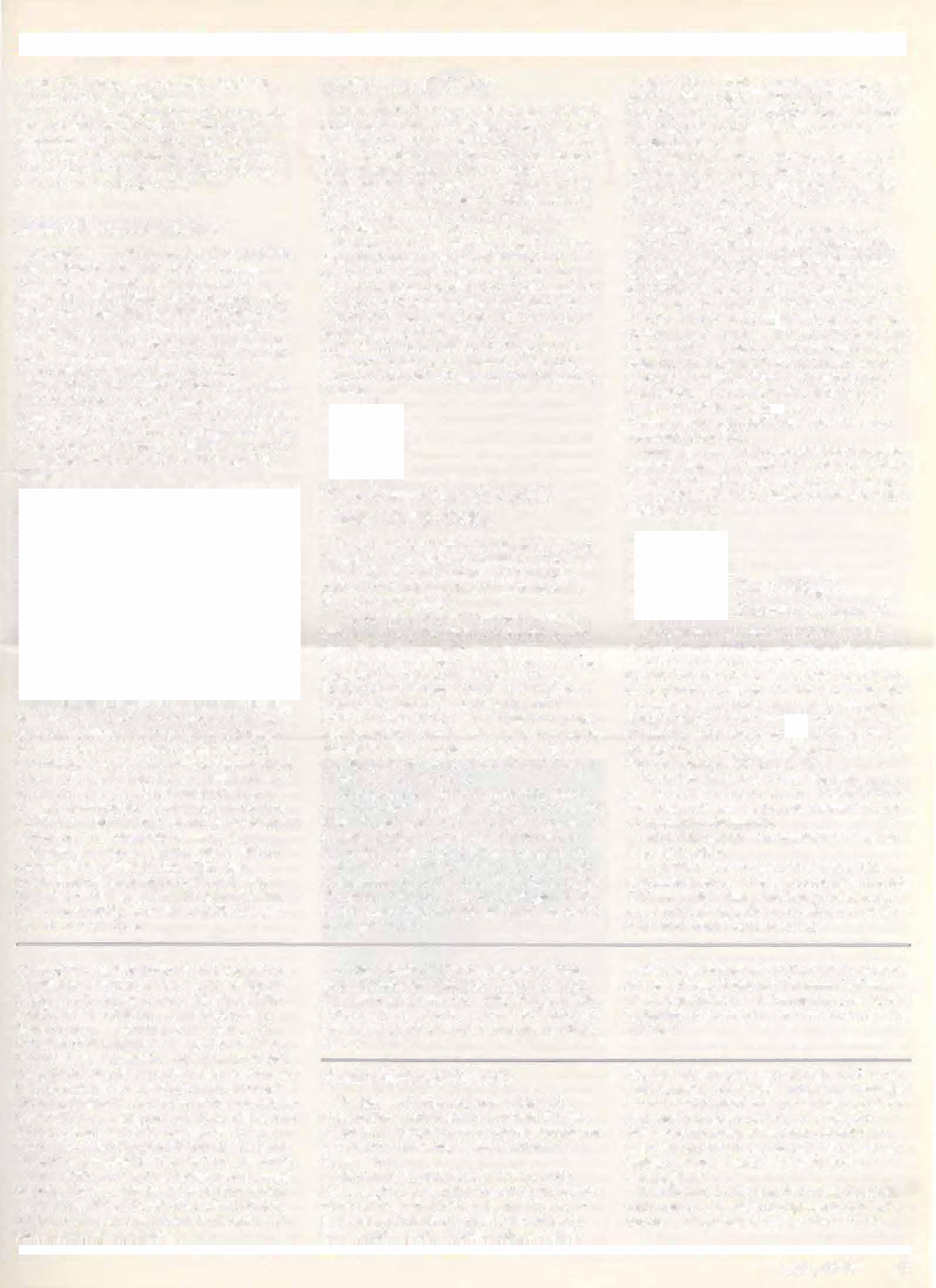
TheAmerican Kennel Club, 1884-1984
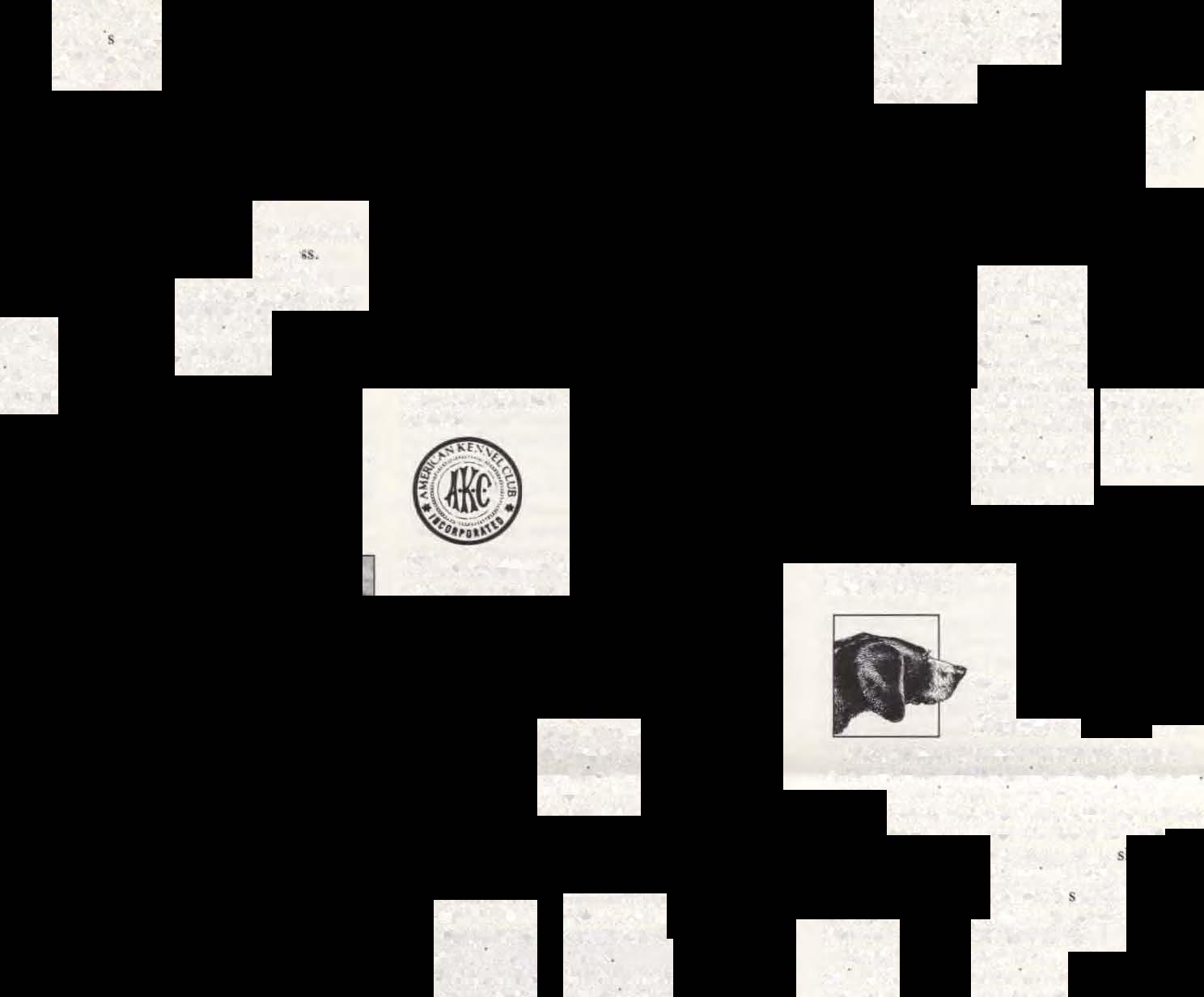
This important book for aU those interested in dog shows is edited by Charles A. T. O'Neill and the Staff of the American Kennel Club. ($17.95, Howell Book House, 230 Park Ave., New York, NY 10069).
From 1878 to 1884, 1.416 dogs were registered: in J894. 3,667; an 1924. 49,579: in 1954, 346.525: and in 1970. 1.056.225. Litter registrations began tn 1932 with 29.200. increasing to 422,098 in 1984.
In 1884, there were II All-Breed Shows and no Specialty Shows. In 1984, there were 989 AU-Breed Shows, 1,414 Independent Specialt} Shows, 1,478 Obedience Irials. 19 1 Trad,ing Tests and 1.141 Field Trial:..
The fust dog in each breed entered in the AKC Stud Book is listed, along with the date. There were a few names changed. The American Staffordshire Terrier was registered as Staffordshire Terrier until 1972, the Bor1oi was Wolfhound (Russian) until 1936, the Brittany was Spaniel (Brittany) unt1l 1982. the Japanese Chin was Japanese Spantel until 1977. the Lha�a Apso was Lhasa Terrier until 1944 and in 1908 only, the West Highland While Terrier was registered as Roscneath Terrier. The first Eskimo was registered in 1888 but after 1959 was no longer eligible for registrauon. The Mex1can Hairless. first registered an 1887, could not be registered after 1959.
Although many facts and valuable data, particularly stati�tical material. have been included. it seems incomplete in many areas. Perhaps a second edition will be a deeper treatment of the history of AKC.
TheDog's SenseofSmell
The Chinese Crested, a ha1rless breed tracing back to at least the 16th Century. is the latest breed made eligible to compete in the Miscellaneous Class at dog shows. obedience trials, and tracking e\ents. This breed is characterized by a hairless body with a crest of hair on top of the head and a plumed ta_iJ. Some Ch.inese Cresteds have a Ouffy haircoat and are known as "Powderpuffs.'' Both ha1rless and powderpuff varieties may appear in the same litter.
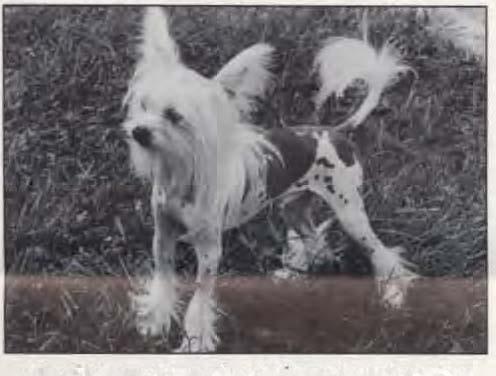
The seven other breeds presently eligible to compete in the Miscellaneous Class are: Australian Kelpies. Border Collies, Cavalier King Charles Spaniels, Finnish Spitz, Miniature Bull Terriers. Spinoni ltaliani and the Greater Swiss Mountain Dog.
given by the handler. Dogs must move well in the field and exhibit intelligence and ability to find game. The judges score all these qualities and the winner of the stakes receives points. based on the number ofdogs competing. At Amateur trials points are also given to second and third placers, based on the number of dogs competing in the stake. A dog cannot earn more than four points toward the title in the Puppy or Derby stakes, which are easier than the Open stakes. The remaining six points must be earned in Open stakes and of those three must be in one major stake at a triaL This is similar to the "major" requirement for the conformation title.
Mrs. McDevitt has another dog in the puppy rankings. Tomar•s Guiness Dart is sixth in the national standings. Double Dee Heatherfield Dash, a homebred, ranks sixth in the national Amateur Gundog standings.
The American Kennel Club was founded on September 17. 1884. when J2 dedicated sportsmen met in Philadelpbta. Pennsylvania. All were delegates of clu.bs which bad been holdmg dog shows or field trials. The new "Club of Clubs" would undertake to consider "all dog matters concerning bench shows and field trials.'' In 1887, AKC took over the TheAmeriran KennelSU1d Book-with number one being the English Setter, Adonis, whelped in 1875. The first issue of Lhe American Kennel Ga=elle appeared tn January 1889
Championship requirements at early shows were three first place wins m the Open Class. In 1900. lhe point schedule was based on the total number of dog� at the show-I point at allbreed shows under 250 dogs up to 5 points at all-breed shows with 1,000 dogs or over Later, requirements were based on competition within the breeds. Unfortunately, the book gives little information about championships recorded and the requirements.
Gwynne McDevitt has had Gordon setters since the earl) seventies. "My first dog was Ch. Tomarcyn Yair Linn of Gowdie." she said. "He IS the foundation sire for my kennel. But 1 don't breed much. perhaps a Iilier every two or three years."
FoundationGrant
The Robert J. Kleberg. Jr. and Helen C. Klebcrg Foundation of San Antonio. TX, has contributed $300.000 toward the construction of the Robert J. Kleberg. Jr. Animal Genetics Laboratory.
The new facility, to be located in the Old Quadrangle will expand the space of the l aboratory of Reproductive Physiology. The additional space is needed to enable Dr. Ralph L. Bnnster, R1chard .King Mellon Profes�or of
The dog has a phenomenal sense of smell. and may b� trained to ass1-.t man in many way-.
Their work tn detecung narcotics IS wellknown. They can be trained lo detect gas leaks and explosives. Less well-known is their ability to detect cows in estrus. A cow may sho no signs ofestrus, and the pertod during ''hich �he should be bred is very short (u ually less than twenty-four hours). Dogs may prove to be useful in the dairy and beef industry.
There have been reports recently about dogs trruned to sniff out term1tes. It is said that their acute sense of smell and hearing alerts the dogs to where the termites are.
All of this special work requires training for dog and handler.
Anosmia is loss of the sense of smell. This can occur after some diseases. including Canine Distemper. Techniques are being developed to measure olfactory activity. Possibly this might be useful in grading hunting dogs.
She is able to combine field trialing with her love for riding. "l take m} Tennessee Walker along to the trials to handle my dogs. scout. and to ride with the gallery as we follow the action. It is fun."
Reproducttve Physiology. and his associates to explore fully the potentinl of theu gene transfer work. Through the de\elopment and u�e of the technique for gtme transfer in animals, Dr. Brinster and his associates have contributed enormom,ly to the understanding of gene regulation, growth control. de\elopment and tumorigenesis.
The Robert J. Kleberg, Jr. Animal Genetics Laboratory will enable tht: School to retain us pre-eminent position in tran�genic re'iearch.
-
Spring 1986 I1
Students, staff, and faculty donated 97 pints of blood to the American Red Cross during the fall blood donation drive. This was an increase of 23 pints over the spring drive.
Dr. Lawrence T. Glickman (V'72), associate professor of epidemiology and Cbjef. Section of Epidemiology. has been awarded a $426,149 grant for three years from the National Institute of Allergy and Infectious Disease for a study entitled "Canine Model of Selective lgA Deficiency." The grant. awarded jointly to Dr. Glickman and Dr. Peter J. Felsburg (V'69), University of Illinois College of Veterinary Medicine. will permit the two researchers to investigate many of the important clinical manifestations of lgA deficiency in the dog, to begin to characterize the role of lgA in the gut. and to study the mechanisms of inheritance.
Dr. Amy R. Marder (V'79), the first resident in animal behavior at the School, bas been appointed to the staff of Tufts University School of Veterinary Medicine.
Dr. Robert C. Hammond (V'48) has stepped down as Associate Dean-Maryland Campus of the Virginia-Maryland Regional CoUege of Veterinary Medicine. Dr. Hammond and his wife have built a retirement home in Earlysville, VA, and he plans to continue his rehabilitative work with the eastern bluebird.
Dr. Mattie J. Hendrick (V'78) has been appointed assistant professor of pathology in
BovineLeukemia Research
Bovine leukemia (lymphosarcoma, malignant lymphoma) is the most common neoplastic disease of cattle, affecting animals of both sexes and all breeds. It occurs most frequently in dairy cattle.
The most significant pathological feature of bovine leukemia is the malignant or neoplastic transformation of lymphoid cells. The neoplastic lymphoid cells multiply in an uncontrolled fashion, invading various tissues and organs either diffusely or forming tumor masses. The disease js always fatal. Affected animals die within weeks. or at the most; months after appearance of clinical signs.
Early in the 1960s research on bovine leukemja was irutiated at New Bolton Center under the direction of Dr. Raben R. Marshak, and since 1969 this work is continued in the Comparative Leukemia Studies Unit under Dr. Jorge F. Ferrer. Under Dr. Ferrer the Unit bas made some outstanding breakthroughs, not only in the area of bovine leukemia. but also in the field of basic viral oncology. Research during the period 1971-1972 established conclusively the existence and identity of a virus as the causative agent of the disease. Sincethat time Dr. Ferrer's group has contributed a number of important findings about the virus. now known as the bovine leukemia virus (BLV). The virus is a member of the C retrovirus group. the same
the Department of Pathobiology. Dr. Michael Kotlikoff (V'Sl) bas been appointed assistant professor of pharmacology in animal biology. Recently Dr. Kotlikoff received a grant from the University of Pennsylvania Research Foundation for his proposal "Airway Smooth Muscle Cell Culture." Dr. Dean W. Richardson has been appointed assistant professor of surgery in Clinical Studies (New Bolton Center). Dr. Thomas J. Van Winkle (V'75) has been appointed assistant professor of pathology in the Department of Pathobiology.
Dr. MichaeJ S. Miner (V'79) was awarded diplomate status in the American Board of Veterinary Practitioners. He is a staff consultant in electrocariography and vice president of Clinical Affairs for the Cardiopet division of ANIMED. Lnc., Roslyn. NY. Recently be has authored or co-authored chapters on the treatment of cardiac arrythmias or conduction disturbance in the Manual ofSmall Animal Cardiology. Current Veterinary Therapy Nine, and a chapter on avian electrocardiography tn Avian Medicine and Surgery. a Clinical Approach.
Dr. E. Neil Moore, professor of physiology, has been invited to serve on a commjttee to review computer grant proposaJs from different schools witrun the Uruversity.

Dean Robert R. Marshak has been named vice chairman of the newly formed Pennsylvania Friends of Agriculture. He also was
appointed to serve on the faculty of the School of Arts and Sciences for the academic year 1985-86.
Dr. William A. Moyer, associate professor of s.ports medicine, was one of the principal speakers at an equine laminitis symposium, held in January in Lexington, KY.
The January 1986 American Kennel Gazelle contained an article about a specialty veterinary practice. Featured was a four-specialist practice in Gaithersburg. MD, co-founded by Dr. H. Steven Steinberg (V'73), whose specialty is neurology. Dr. David K. Saylor (V'76) is also a member of the practice, as specialist in soft tissue surgery. Another member, Dr. Ann Chjapefla, the internal medicine specialist, also has ties to Penn; she was a resident here.
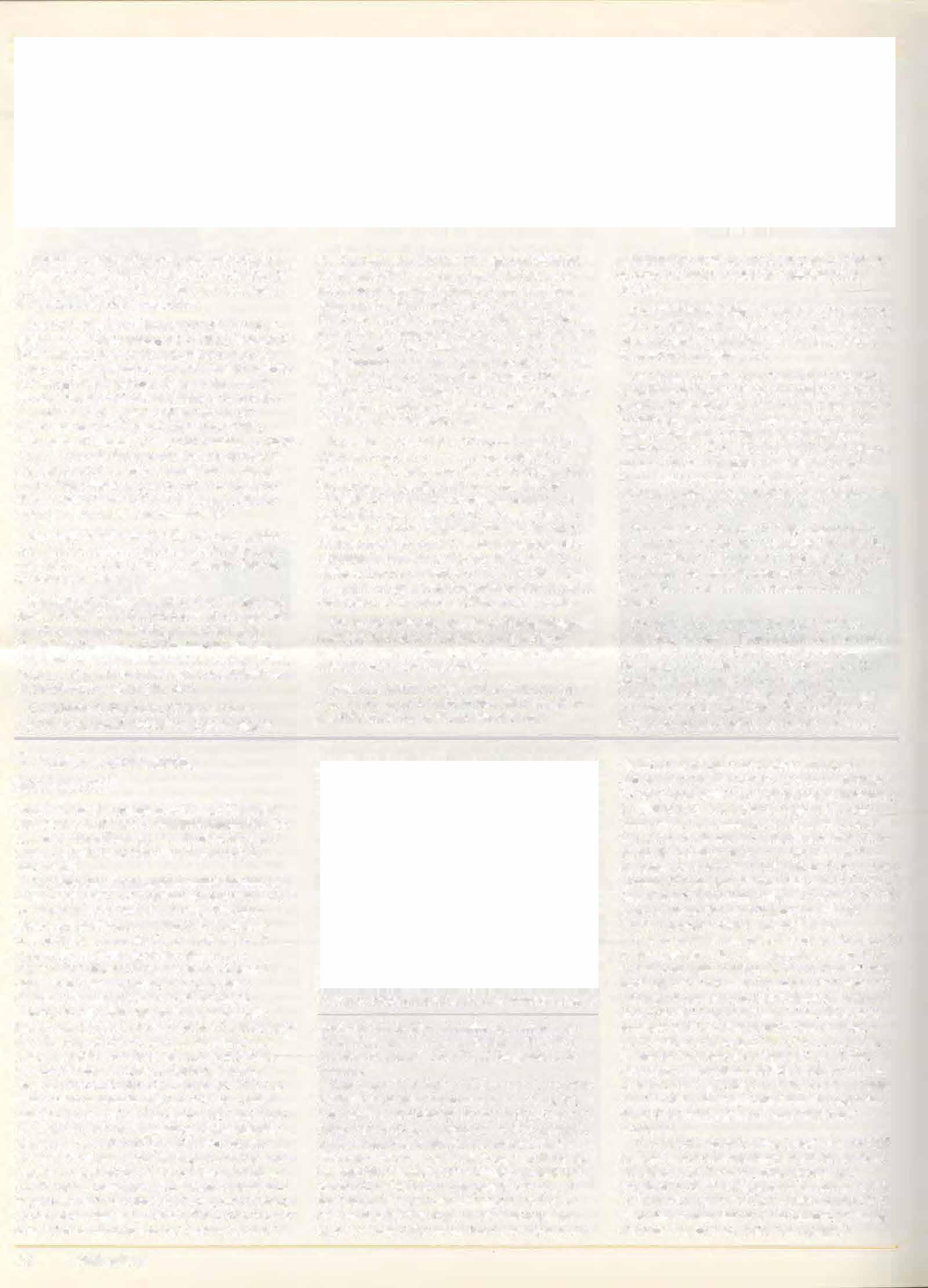
Dr. Charles J. Dn'ben {V'65), Moorestown, NJ, was honored by the Congregation Beth El. Cherry Hill, for his service to the synagogue, to the Jewish commuruty. and to the people of Israel. He was presented the Lion of Judah Award.
Dr. Robert J. Rotman, professor of biochemistry, has been appointed chairman of the board of the Ile-lfe Center for the Arts and Humanities in Philadelphia. In February Dr. Rutman participated in a symposium on Vietnam at Gettysburg College. He discussed the "Ecocidal Effects of the Vietnam War.'' ln March he gave a seminar at the Howard Uni-
significance of these and other differences shown by the BLV system was not appreciated by other authorities in viral oncology. However. in 1980 HTLV-1, rhe first C-type human leukemia virus was discovered. and it was soon found that it shares all o( the differential characteristics of BLV. Il is now clear that BLV is the prototype of a special family of C-type retro� viruses. The unique relationship with HTLV-1 is one of the main reasons why BLV is now considered as one of the most important animal models to study viral leukemogenesis.
AclusterorBLV paniclesoutsideorabo,•inelymphocyte group to wruch all mammalian leukemogenic viruses belong. This group includes HTLV-1, the virus responsible for T-ceiJ lymphomas in humans.

Soon after identifying BLV, it was found that it differs in certain important immunologicaL biochemical and biological propenies from the other known C-type retroviruses. For example. it was found that cattle continuously infected with the virus have antibodies against the major internal BLV protein. Thls finding established the fact that BLV is an exogenous virus, and further studies have confirmed this. It is now known that BLV is transmitted horizontally. almost always after birth. For several years the

Once an animal becomes infected with BLV it remains infected for life, regardless of whether or not it develops leukemia. lt is estimated that probably no more than 5 percent, and certainJy less than lO percent, of cattle infected with the virus ever develop leukemia. Thus. 90 percent or more of BLV infected cattle are asymptomatic virus carriers. BLV carriers can serve as a source of infection for other cattle. and they may have subtle abnormalities that are importanl For example, they may have immunodeficiencies that, although not clinically apparent, favor the development of other infectious processes.
The fact that only a small proportion of BLV infected cattle develop leukemia indicates that, in addition to the virus. other factors are involved in the development of leukemia. Studies in the Comparative Leukemia Studies Unit have shown that one of these factors. probably the most imponant, is the host's genetic
- - --
12 Bellwether
versny Cancer Center. Washington. on "Re-evalu:.ttion of Uposomes as Btological Modulator:..,. At the end of tbe month he attended a science conference at Hampton University for the purpose of interviewing science minority students. He abo was Visiting Scientist for one week. leclurang on molecular biology.
Dr. Marc A. Rosenberg (V"71) stars in a television serie!>, People. Pees and Dr .\fare. produced by New Jersey Network. a public television ;;tation. The series is being aired b} 128 public televisiOn stations.
Dr. Susan Donoghue (V'76), assistant professor of nutrition. has been installed as president of the American Academy or Ve1crinary Nutrition.
The l.."''ersity of Pennsylvania Research Foundation has awarded grants to the following faculty members: Dr. Urs Giger, �ststant professor of medicine. for his propo:.al "Canine PhosphofructoJ...inase Deficiency'': Or. Debra Deem Morris� assistant professor of medicine, for her proposal ''Leukocyte Transfusion Therapy for Bacterial Septicemia in Neonatal Foals: Granulocyte Function in Equine Neonates, before and after Leukocyte Transfusion.,; Dr. Stephen P. Schiffer. assistant professor of laborator} antmal medicine. lor htl' proposal ·'CharacteriLation of Organic Aciduria m Substrain of Balb c Mice": Dr. M. Raja Iyengar, profcs�or of biochemistry, for his proposal "Biophystcal Studies on N-Phosphoryl Creatinine. a Newly Characterized High Energy Compound."'
Dr. Sydn�y M. Evans (V/7), lecturer in radiology. is a diplomate of the American College of Vetcnnar} Radiologists.
Dr. Dnrr�l Bier}. profe!.sor of radtOiog} und Chairman. Depanment of Chnical �tudte�. Philadelphia. recei,·ed the AAHA '\orthca!.t Region Award. J\LPO. Inc. recen1ly made a $1.000 gtft to Dr. Btery. It will be used to place
composition.

While basic :.tudies on BLV continue, Dr. Ferrer':. group is also working on 1he development of test� to detect the presence of BLV in cattle, and of vaccines to prevent BLV mfecuon.
An Important consideration m the development of a reliable test to detect the virus in animals is the fact that celb infected with BLV do not !)ymhesi1e virus particles and viral antigens inv1vo. This means that cattle infected with the virus do not exhibit a viremia and, therefore, the dt!)e�e cannot be identified by tests based on the direct detection of BLV in the plasma.
All cattle infected with BLV have anlhiral antibodie!>, and procedures aimed at the detection of these offer the best. and most practical, approach for dtagnostic tests. The presence of the antibodies provtdes an accurate mdication of active rather than past infection.
Until recently, the radioimmunoassay (RIA) procedure was the most specific and sensitive technique for the detection of antibodi� to BLV. However. this test is impractical for routine use because it requires specialized personnel and equipment.
Because ot hs simplictty, the agar gel immunodiffusion test (lD) bas been the most widely used �crological test. This has been marketed under the name Leukassay B. After some use in the field this test lost its popularity because it is now rccogmzed that it frequently gives false negmivc results, particularly with animals in the early 111age of infection. Under certain cond1-
X-ra� vtew box� in some ot the VH UP examination room.... Dr. Bier} and Dr. Gail K. Smith (V74) received a grant from Lhe Morris Animal Foundation for lheir project "Hip DysplasiaBiomechanical and Radiographic Correlations."
Dr. Mark W. Allrun (V'32). former dean. and professor emeritus of surgery. was awarded the Thomas L. Holmes Community Service Award. the top community award given b� Media. PA.
Dr. \\illiam . Chalupa. profe�sor of nutrition. contributed to a t\ational Re!.carch Council Report on "Ruminant Nitrogen Ullage."
Dr. Robert E. Davies, Benjamin Franklin and Univcrl>ily Profel>sor of Molecular Biology. taught a course "Are We Alone in the Universe" in the Univer�il)\Gifted Program.
Dr. Roy D. Hoffman (V'3J) \\as named "Veterinarian of the Year" at the Pennsylvania Veterinal) Medical Association meetmg in October. Recently Dr Hortman was named Bedford Elk's Citi1en of the Year. Dr. Hoffman live� in Bedford, PA. and bas practiced veterinary medicine for 55 years.
Or ames S. Reid (V'62). Vienna, VA, received the American Animal Hospital J\ sociaLion's Regional Pracmioner of the Year Award.
Or. Eliubetb Atwood Lawrence (\'56) has \Hillen Hoofbeats andSociety: Stutl1es (d Human-/lone lnteraetwn.s. publtshcd by the Indiana University Prebs.

Dr. William Medway, professor of clinical laboratory medicine. completed a three-year term a.-. a member of the Marine Mammal Commi'>SI(>n's Committee of Scientific Advisors on Marine 'v1ammal
Dr. Charles W. Raker (V'42) hus been named The I awrcnce Baker Sheppard Protcs!)or Emenlus of Surgery.
Dr. Dudley E. Johnston� professor of surgery,
lion� the ID test may give false posilive results. Also, the lD procedure does not lend itself to automation. and is therefore not prucucal for large scale use.
The Comparative Leukemia tudtes Unit bas directed its efforts to the development of a reliable. mexpcnshe and pracucal test thai can be automated or semiautomated and used for large scale seroepidemiologicaJ �tudies. With support from the Edgewater Corporation, Dr. Ferrer's team has developed a lest based on the enzymeljnked 1mmunoab orbent assay (El lSA) procedure. The basic ELISA procedure itself was found not to be suitable, but with modifications it has been developed into a highl> sen�itive and specific test now designated a� the ELISA NBC test The test is simple to perform. does not require spectal equipment. and it can be conducted by an individual with minimal training and skills. Further, it is inexpensive (less than ten cents/sample) and it uses reagents that are commercially available and stable. A patent for the ELISA-NBC procedure hib been applie<i for in the United States and in a number of other countries v.ith stzeable cattle and dairy industries.
lmmedtate applications of the El !SA-BC test include seroepidemiologicaJ surveys to determine the prevalence and distribution of BLV. the testing of cattle in eradication and control programs. the selection of cattle for exportation, the testing of cattle at import stauons. and the election of breeding stocJ....
taught a post-graduate refresher course on ··soft Tis..,uc �urger) of Dogs and Cats" and t\\.o' oft Tissue Worbhops"at the Univcr.,ity of Sydney. Au:.tralin. in February.
Biomedical Research Support Grants were a\\<ardcd to Dr. Urs Giger for "Canine Pho�pofructokinase Deficiency: An Animal Model for Glycogen Storage Disease T)pt VII:" Or. Joan Hendrick> (V"79), assist�nt profes,.,or of medicine. for ·•steep-disordered Breathing in Pups and \dull Dogs with L'pper Atf\\tl� Obstruction:" Or. Gert Niebauer, asstslanl prolessor of surgery. lor "Immune Reactivity in Canine Cruciatc Ligament Rupture."
Dr. Gerhard A. chad, profe �or of parasitolog�. h� been appointed Lo a three-}ear term as a mcrnber of the Graduate Group in Biolog). Recently Dr. Schad made a presen1at1on on par�ite btoiOg) at the Park Cit� meeting of the MacArthur Con�onium on the Biolog� of Parasitic Oi:.en:.es
Dr. Jarnelt B. Lok, assistant profc��or of parasitology. has been appointed a member of the Nl H-NlAIDAd Hoc Study Section for Tropical Medicine and Parasitology.
Or. Alan M. Beck, adjunct as)OCtate profe!>sor of animal ecology. was inten iewed b) Italian tclc\ision for "ltalia Sera." n national taJk show. and he discussed the Mudtes conducted here by the Center for the lnteracuon of Animab and �ociety. Dr. Beck abo participated in the conference "Zoonoses in Nev. Cngland: A Conference for Veterinarians and Physicians:· at the University of Massachusctt�. Dr. Beck spoke on thr.: human animal bond.
.Jamie Quackenbush. the -,ocial wnrker at 'HLP and Dcmse Gra\'eline, former editor of Pel Cure Repvn. havejust completed a book, H'hm Yuur PN Dies: Hut\ to Cope tdlh Your Feelillf{.\. 1 he volume is published b) Stmon and Schuster.
Epidemiological studies indicate that about 30 percent of dairy cattle in the U.S. are infected with BLV, and appro�imately 70 percent of dairy and beef herds in this count!) contain inlectcd ammals. Since BLV is readily transmitted. epidermologists have·estimated that unless control measures are instituted the number of animals and herds infected with the virus will double arithmetically every three years.
Since most cattle become infected with the virus at about IV2 years, there arc two main approaches to eradication and control. One is the isolation or removal of infected antmals from a nerd. The other is immunization of uninfected anjmals. Vaccination would provide the most practtcal and economicall)' reali.,tic approach to the eradication of BLV infection.
Dr. Ferrer\ group. with support from the Edgewater roundation. is engaged in a major effort to develop a suitable vaccine and has, in fact, developed a vaccine which is suitable to immunize certain cattle populations. However. lhts preparation. known as Vaccine 1. c-annot be used for caule that are to be tested for BLV infection b> means of serologtca1 tests {e.g.. cattle for export) smce it would give false positive results because or the antibodies produced in response to the vaccine. Researcher!> at the Comparative Leukemia Studies Unit are now engaged in work to produce a vaccine which will not interfere with the !)erologjcal diagnosis of BLV infection.
-John E. Martin. Jl.\1 D.

-------
Spr;ng 1986 13
ContinuingEducation Brief
1986 Penn Annual Conference
Neither sleet, nor snow, nor freezing temperatures prevented 600 veterinarians from attending the School's 1986 Penn Annual Conference. Alumni support (or the Conference has been increasing every year, and the 1986 attendance equaJled our record Centennial Year Penn Annual Conference.
The Conference Directors, Dr. Tom Divers and Dr. Charles Newton, are working toward increasing the number ofspeakers brought in from other institutions. Please drop a note to either Dr. Divers (Large Animal Topics) or Dr. Newton (Small Animal Topics and Basic Science Topics) with speakers and/ or topics you would like to hear.
The 1987 PENN ANNUAL CONFERENCE WILL BE HELD ON WEDNESDAY, JANUARY 28, AND THURSDAY, JANUARY 29, AT THE ADAM'S MARK HOTEL IN PHILADELPHIA.
CommonHealth ProblemsinGoatsand Sheep
continuedrrompage3
sucking intestinal worm. The animals become anemic and develop diarrhea. lf they are not treated promptly, they can die. To prevent heavy worm infestation, manure samples should be checked frequently and lhe whole herd should be wormed at regular intervals. Also, when turning sheep out to pasture, every effort should be made tO use a meadow which has been dormant from October to March and thus bas a reduced parasite burden. Weaned lambs should go to clean pastures and not those used by ewes. Dairy goats which are kept inside are not so prone to parasites.
However. they have other problems. Sheep and goats are quite susceptible to respiratory ailments. Slowly progressive pneumonia occurs more in sheep. Ovine progressive pneumonia (OPP) is the most common viral pneumonia.
AlumniDay-
saturday, May 17, 1986
-Philadelphja Campus
From the Lime of the flrst graduating class in 1887, alumni have returned to the School to celebrate the day that marks the beginning of their careers as veterinarians.
Pleasejoin us for all or part of the Veterinary Alumni Day festivities on Saturday, May 17, 1986. The day and evening have been planned for entertainment and celebration: Coffee with the Dean and Faculty
The Veterinary Medical Alumni Society
Annual Meeting
A buffet luncheon (All you can eat) Things to do and places to see!
• Tour the small animal hospital
• Visit the Philadelphia Zoo
• Marvel at the wonderful exhibits at the University of Pennsylvania Museum
• Bus tour through Society Hill, including visits to the Powel House, home of the last colonial mayor of the city and the Hill-Physic-Keith House, home of the "Father of American Surgery"
Dean Robert Marshak and the Veterinary Medical Alumni Society will co-host a reception for all veterinary alumni at the Franklin Plaza Hotel at 6:30 P.M. to be followed by dinner and a night of dancing.
Round trip bus transportation will be available from the Franklin Plaza Hotel to the School on Saturday, May 17th.
A special invitation is extended to our REUNION YEAR classes. Whether you graduated Crom Penn five years. twenty-five years or fifty years ago, each quinquennial reunion has a unique meaning. Bill Hardy. Jr.. V'66, is the 1986 Reunion Year Chairman and be bas worked diligently, along with all our Reunion Year Class Agents. to ensure our best ALUMNl DAY ever!
1986ReunionYear ClassAgents
1936-Earl Cook 196 I -Paul Evans
1941-Robert Lerch 1966-William Hardy, Jr.
1946-Seibert Berlin 1971 -Gerald Pietsch 195 J-Clarence Bryer 1976-Britan Kolboume
1956-William Butler, Jr. 1981-Geoffrey Wright
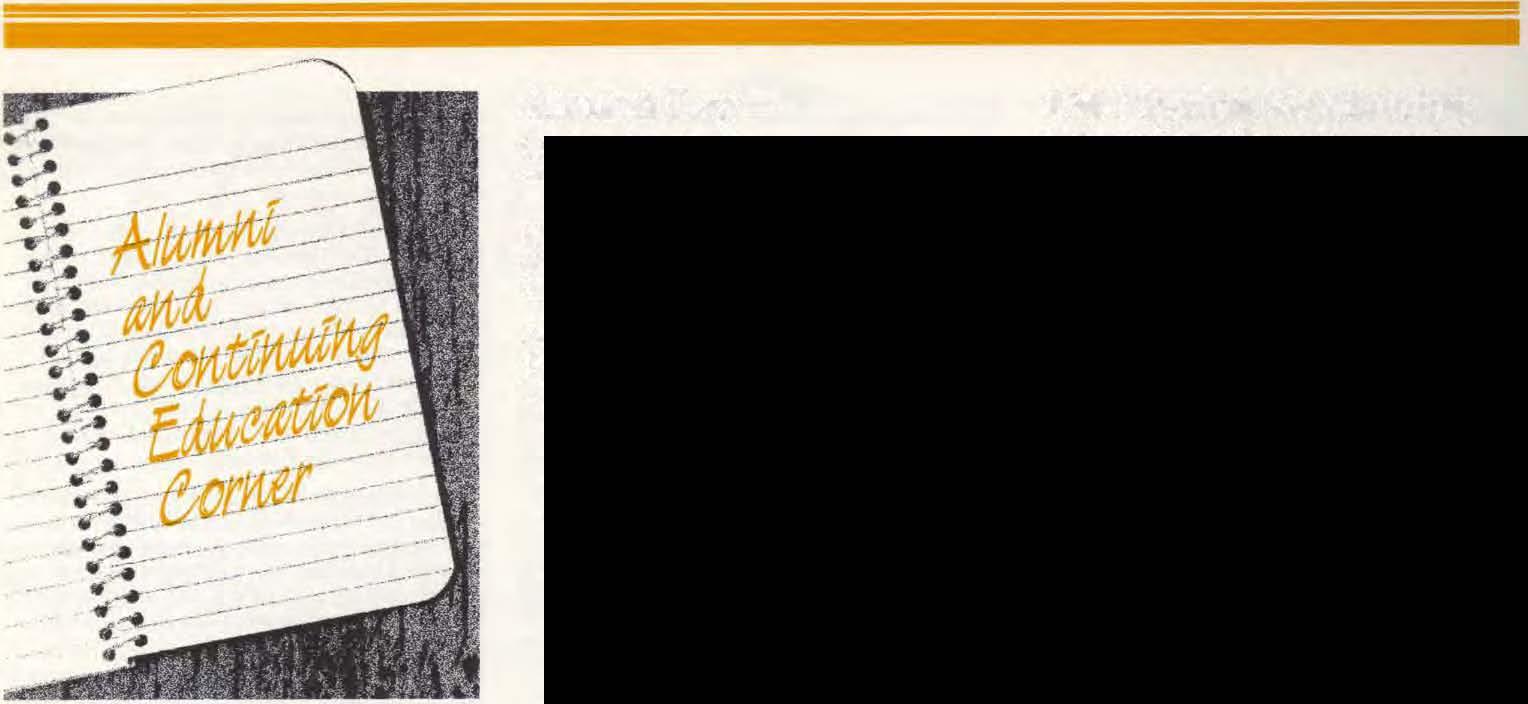
"There is no cure." said Dr. Vaala. ''One can only treat it supponively." Goats and sheep also develop bacterial pneumonia; this can be treated with drugs. "They have to be kept in a clean, dry, well ventilated environment to prevent respiratory diseases," she said. "There.is a problem treating dairy goats with drugs; we don't quite know the period of time for which milk from these treated animals should be withheld from market."
Goats frequently develop arthritis. Thejoints swell and there is pain. The most common form, Caprine Arthritis-Encephalitis Syndrome (CAEV) is caused by a retrovirus. It is thought that it is passed through the colostrum. The virus is latent and many animals will not be affected until older. Some infected goats may show no signs while others become depressed and have weight loss. lf CAEV is present in a herd. kids can show signs of neurological disease between the ages of one to four months. These animals frequently nave an ascending spinal cord infection and the prognosis is poor. Arthritis in goats can also be bacterial in origin. These forms are treatable with antibiotics. Diet
1986SpringContinuing EducationSeminarsat Penn
WEDNESDAY, MAY 21t 1986
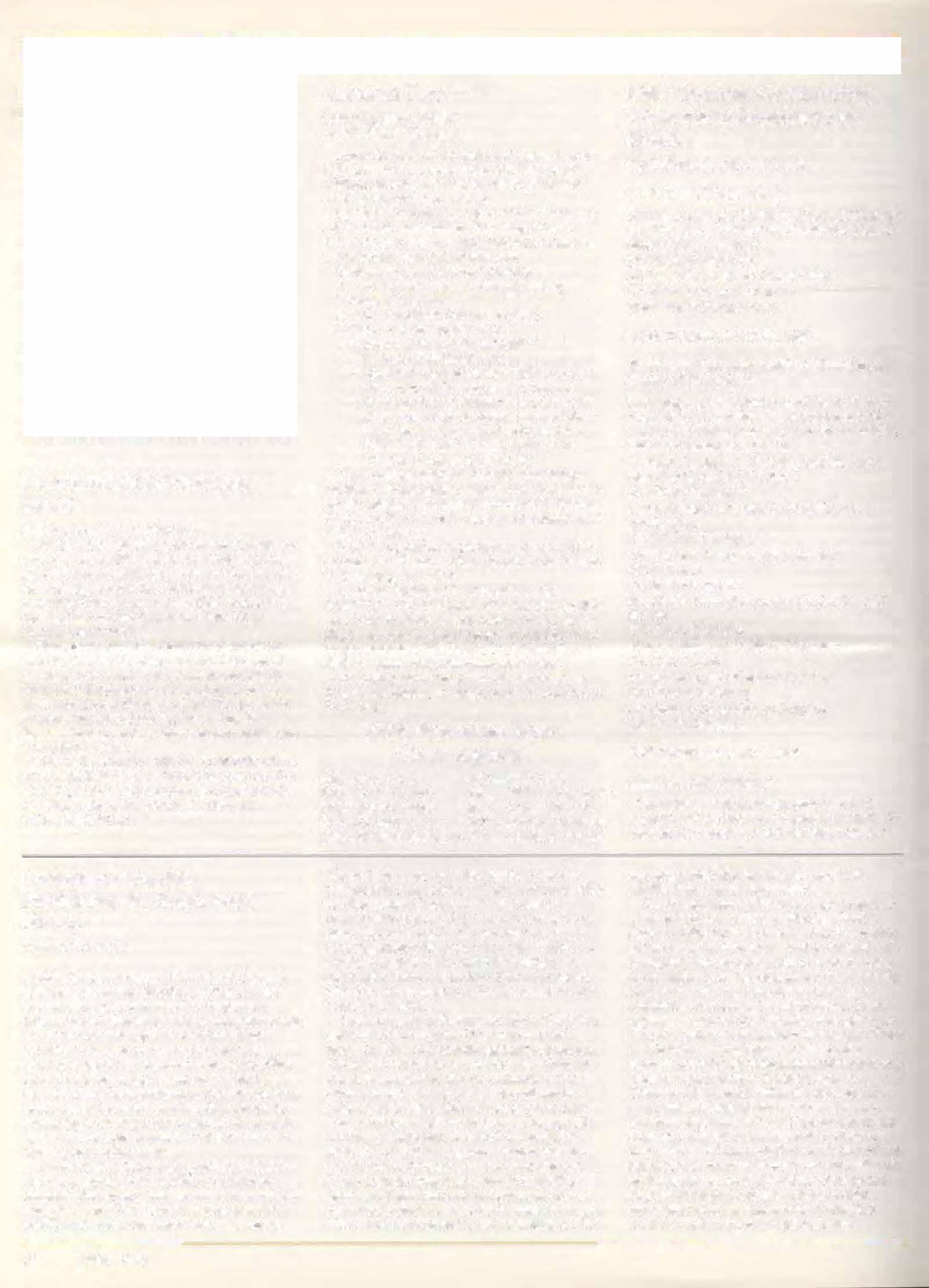
Small Animal Dermatology
Topics: Canine and Feline Pyoderma : Diagnosis and Therapy of Seborrhea; Exfoliative Dermatoses; Allergic Diseases.
Dr. William Miller� Jr.
Assistant Professor of Dermatology
Dr. Robert M. Schwartzman
Professor of Dermatology
WEDNESDAY, MAY 28, 1986
Nutritional Interactions with Producti�ity and Health of Dairy Cows
This program will address nutritional interactions with milk production, reproductive efficiency, metabolic disorders, parasitic infections. and their economic impacts.
Interrelationships of Parasites and Nutrition with Healrh and Productivity
Dr. Colin Johnstone
Technological Advances in Nutrition and Produceivity
Dr. William Chalupa
Prorein Nutrition and Reproductive Performance
Dr. James Ferguson
Metabolic States that Affect Production and Health
Dr. David Kronfeld
Malnutrition and Medical Disorders
Dr. Tom Divers
Forage Analysis Facts and Foibles
Dr. Charles Ramberg
Nutritional Counseling in Practice
Dr. David Galligan
WEDNESDAY, June 4, 1986
Small Animal Radiology
This small animal radiology program, with approximately three hours devoted toward lectures in the morning and three hours devoted
can play a role; if goats are fed too much alfalfa, they may develop arthritis.
Goats and sheep suffer from caseous lymphaditis infections, a disease affecting about 8 percent of the herds. 1t is caused by Corynebac'terium pseudotuberculosis (ovis). Animal!> with the disease are not permitted lo leave the state as the illness is highly contagious. The infection causes abcesses. In sheep these occur most commonly at shearing laceration sites. Goats appear to contract the infection through ingestion: they often develop internal abcesses. These may involve internal lymph nodes in the thoracic (chest) and abdominal cavities and may involve organs such as the liver. lung or spleen. Chronic weight loss is often the most common complaint associated with internal abcesses. External abcesses can be excised or lanced and drained. Affected animals shouJd be isolated from the rest of the herd/flock until all drainage has stopped. Internal abcesses are very difficult to diagnose and treat. Antibiotic therapy and surgical removal have been tried but often treatment is not successful and the affected animal is culled. In ewes and goats these
--
14 Bellwelher
toward smaller group workshops in the afternoon. will be practitioner-oriented.
The lectures will emphasize principles of radiographic interpretation of the chest and abdomen. The workshop will be handled as a laboratory with teams of two to three people assigned to a viewbox with the Radiology faculty circulating to assist in radiographic interpretation of the presented cases. The lab-
oratol) will concentrate on recognition of normal and abnormal radiographic findings of the chest and abdomen with specific emphasis on differential diagnosis.
Dr. Darryl Biery, Professor of Radiology
Dr. Sydney fvans. Instructor in Radiology
Dr. W. Harker Rhodes, Professor of Radiology
Dr. Mark aunders. Resident in Radiology
Dt. Jeffrey Wonman. Asststant Professor of Radiology
THIS COURSE IS LIMITED TO 30 PARTICIPANTS
For further information please contact A!>hra Markowitz. Uoiversity of Pennsylvania School of Veterinary Medicine. 3800 Spruce Street. Philadelphia. PA 19104 (215) 898-1882.
the Veterinary School's Alumni Society Executive Board.
Mr Cbules S. Wolf, chairman orlbe cbool's Board of OverseeTS, calls tbe Board to order. The Board of Overseers held their winter meeting in conjunclioo with the Penn AnnU2l Conference.
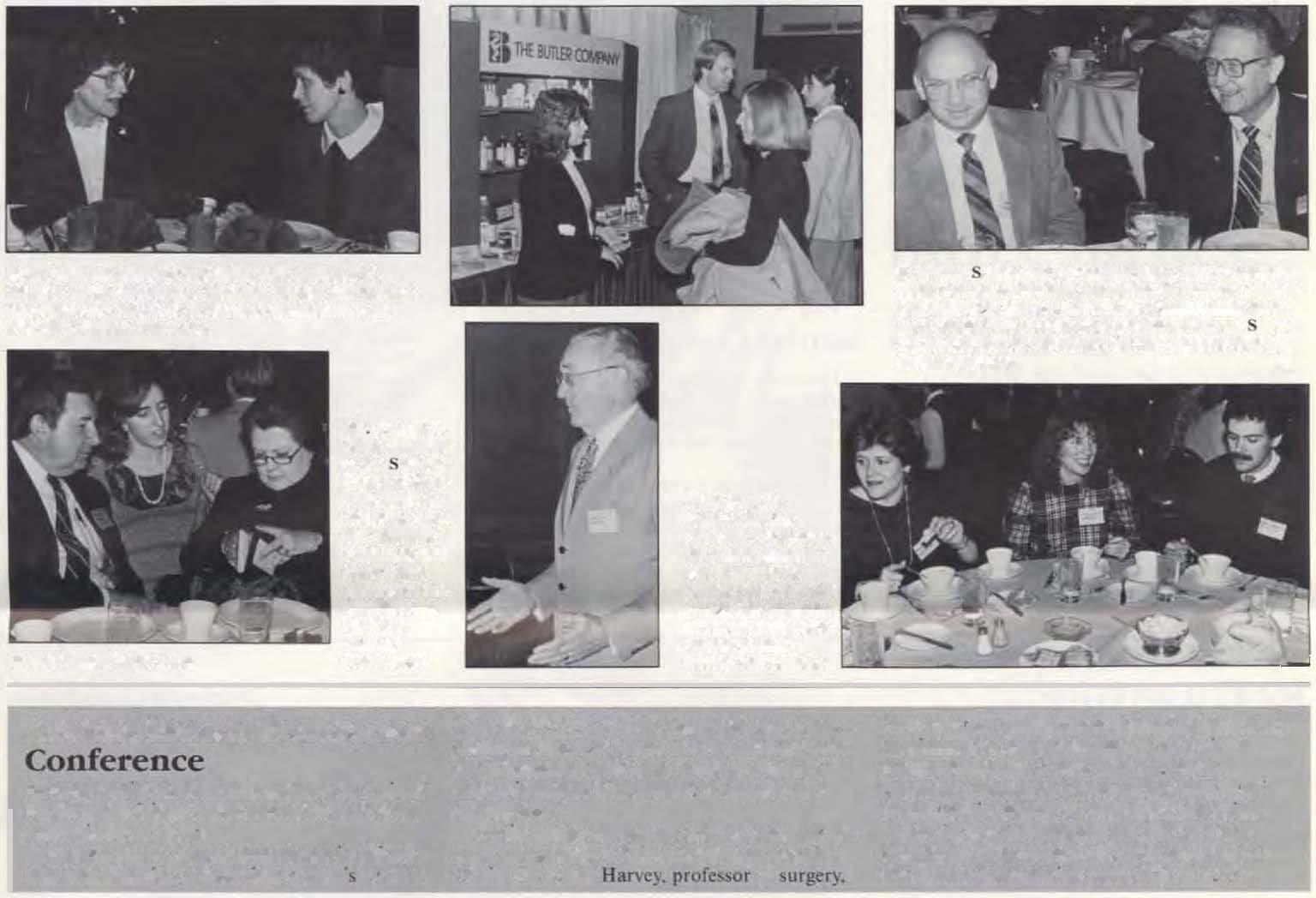
Each )ear, the Alumni Society sponsors 11 luncheon for recent graduate.'\ (thO'•I' alumni in practice less than five 'ea�).1he luncheon promote\ interaction amonR alumni.
facult) 11.nd studenh. _____


.AnimalHealthTe hnician Role ofrhe AHT."' ••The Application of Accu- Uni\er!'tit� of Pennsylvania School of Vcterinaf) erence puncture. Infrared La:ser. and Electromagnetic Medtcinc:: Or. Joseph Haines of the Fanhill Field Therapies in Equine Medical Practice.. Equine Veterinary Clinic: and Dr Mark Harcum Jumor College will sponsor an Ammal and ..OtagnostJc Ultrasound· l,rinciples and Saunders. resident in radiology. UniveDil) o( Health Techntcaan Conference un June '7 at the Applicatitln... Penns\ lvanm School of Vetcrinan Mcdkmc. college m Bryn Mawr:

Partacipatingconference faculty members are The . fee for the conference is $20 and four Topic� include ..Rapid Technique� m Macro- Ruth Dougherty. RVT. of Walnridge Equine Continuing Educ-.ttion Units will be a\\ardcd. bial ldcntificatton... ..Vetennary Ocnu 111: The Chmc: Dr Cohn arve rofessor of surgery. For further informauon. call (215) 525-�554. ------------�------��----��--�----����----�----------
abcesses can spread into the mammary lissues, re!>ulting in poor milk production.

Foot problems are common in sheep and goats if the animals are not proper!> taken care of. 'The teet hould be tnmmed and shaped periodicall}." said Dr. Vaala. "Othen\ise �ites exi�t for bacteria to flourish." This cause!> foot rot. a highly contagious disease. Animals can be protected against it by frequent vaccination, proper foot care and a clean, dry environment.
Skin problems, too, can be a big headache for the sheep and goat farmer. Both species arc good hosts for various parasites. and goats in particular are prone to lice in the winter and fall. A dipp1ng program \\ill help eliminate these pests. Also. the goat is the only food animal prone to ear mite infection. Ears should be checked periodically.
Mastitis is common in goats and sheep. Prevention •� important as the bacteria causing the infection can be passed to the suckling young, causing illness. Milk from goats with mastitis should not be sold for human consumption or for cheese production as some of the organisms pose a threat to human health. Dairygoat
owners should check their animals fore\idence of mastitis by examining the milk in the strip cup prior to milking out the udder. Also. once a month, a California Mastitis Test should be performed. MastitiS eriously affects milk production and it is responsible for economic losses. Prevention includes clean milking. equipment. washing of udder and teats and the milker's bands prior to milking. and dipping the teats after milking. It is very important that the animals are milked regularly and that the udder is emptied each time. lf mastitis is suspected. a culture should be done to determine the causative organism and the proper antibiotic. lf drugs are used to combat the infection. the bovine withdrawal time for the particular drug should be used as a guide. though it wa:. found that drug!> can be in evidence in goat's milk after the minimum withdrawaJ time indicated for bovtnc!\. This i� particularly important if penicillin is u ed. a residue of this drug in milk can be fatal to people with an allergy to the drug. Sheep and goat owners must protect their animals from accidental poisoning and conrme them to a afc pasture. Goats in particular are
ver} curious and. according to Dr. Vaala. are nibblers. "They will eat anything in l>ight." she said. "They love ornamentals and arc not able to distinguish between harmless and poisonous plants. Also. fertilizers. herbicides and pesticides !>hould be stored \\here the} cannot reach them... Goats should not be allowed to roam. particular!� if the property is planted with azalea. rhododendrons. ye�s and other ornamental shrubs as these can be lethal. Dr. Vaala also pointed out that goats and sheep should not be staked in an open area us they can be attacked by roaming dogs. If they mu t be staked. it should be in a protected enclosure. Goats generail> male better ''pet-." than sheep. "The} follow one around like a puppy .. she said. 'They can be taught to \\alk on a leash and they are fun to watch. The Afncan Pygmy goat I!> quite popular as a pet.··
According to Dr. Vaala. veterinarians are becoming more interested 1n these )pccics "But much more research is needed bclorc we tully understand the requirements of these animals and their c.Ji�eases."

___
Mrs. Frederick Rude (L) and Mar)· \nn Tu<>chak (R). Member nf the Wilmington Financial Group. Ms. Tuschak has generously offered to co-spon�or publication of the 1986-1987 Student Directory.
Dr. Roger milb (V'57), President-elect orIhe Pcnn5ylvanin Veterinary Medical As..,ociation (L) and Dr. Stewart Rockwell (Cor'SO), President of lhe Pennsylvania Vetcrinat) Medical Association (R). Drs. Rockwell and mitb are members of
Mr. and Mrs. Roger Caras
-H.W Spring 1986 15
NewOverseers
The Umver..it:y Trustees approved the appointment offour new members to the School'� Board of0\erscers.
Miss Henrietta K. Alexander. Coatesville. recentl) returned to Pennsylvania to become more actively involved in her famil}'scattle and Thoroughbred breeding inter�ts. Her grandfather. the late Roben J. KJeberg. Jr.. developed the Santa Gertrudis cattle breed.
Mrs. Ann Eldredge, Middleburg.VA. breeds and shows English cockerspaniels. Together with her husband. the late E. Irving Eldredge, she bred and raised an outstanding Line of Irish setters and exoticcattle at theirTirvelda Farm in Virginia. Mrs. Eldredge has been a member ofthe LadiesCommittee ofthe Small Animal Hospital since 1980.
C. Taylor Marshall, Oakmont. PA. is chairman and president ofthe EdgewaterCorporation. He is Master of Foxhounds ofthe Sewickly Hunt Club and servesasadirectorof the American Foxhound Associationandthe Ma�tcrof Foxhounds Association ofAmerica.
Mrs. Anne F. Thorington is a breederof Thoroughbred horses. Recently she has begun toshowdogs, and her new Pembroke Welsh corgi finished its Champion title while still under oneyearofage.
NewFieldServiceBuilding

The Field Service at New Bolton Center moved into its newquarters in February. The new building is of modular construction and contains five individual offices and a reception area. There is also aconference room. The ba�ement i used a storagespace for old medical records and otherdocument:..
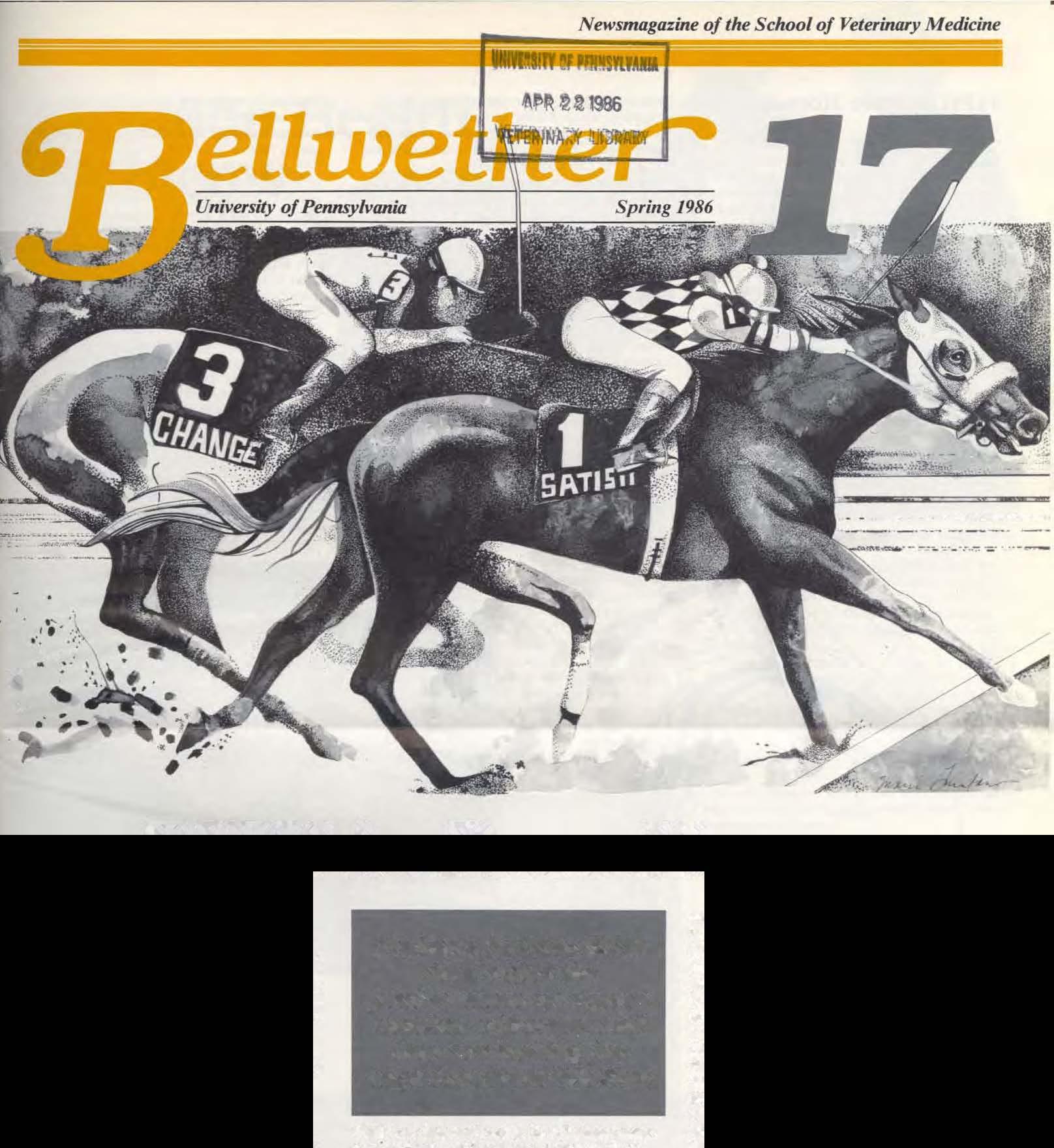
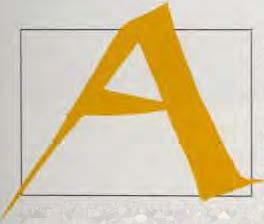
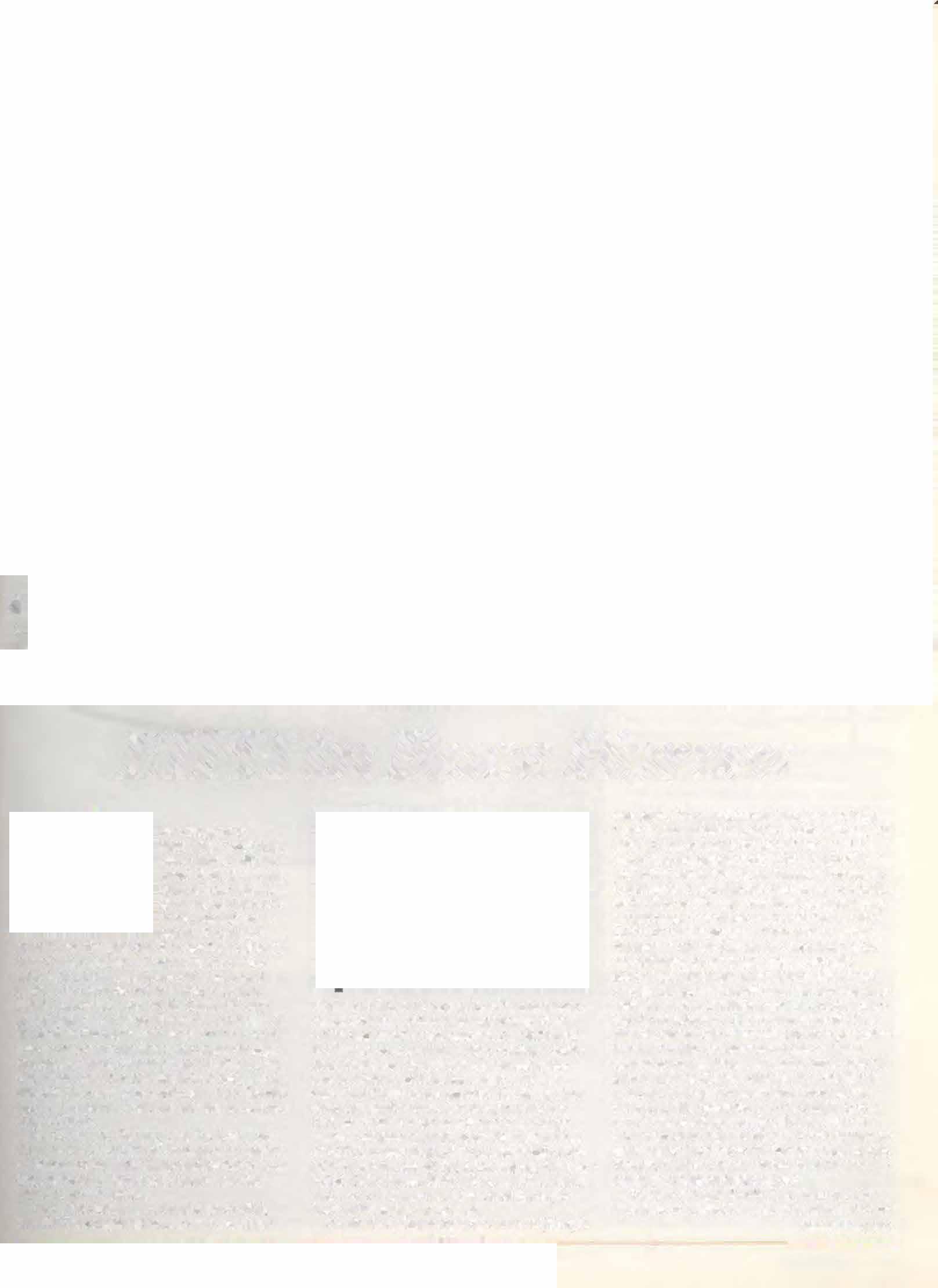
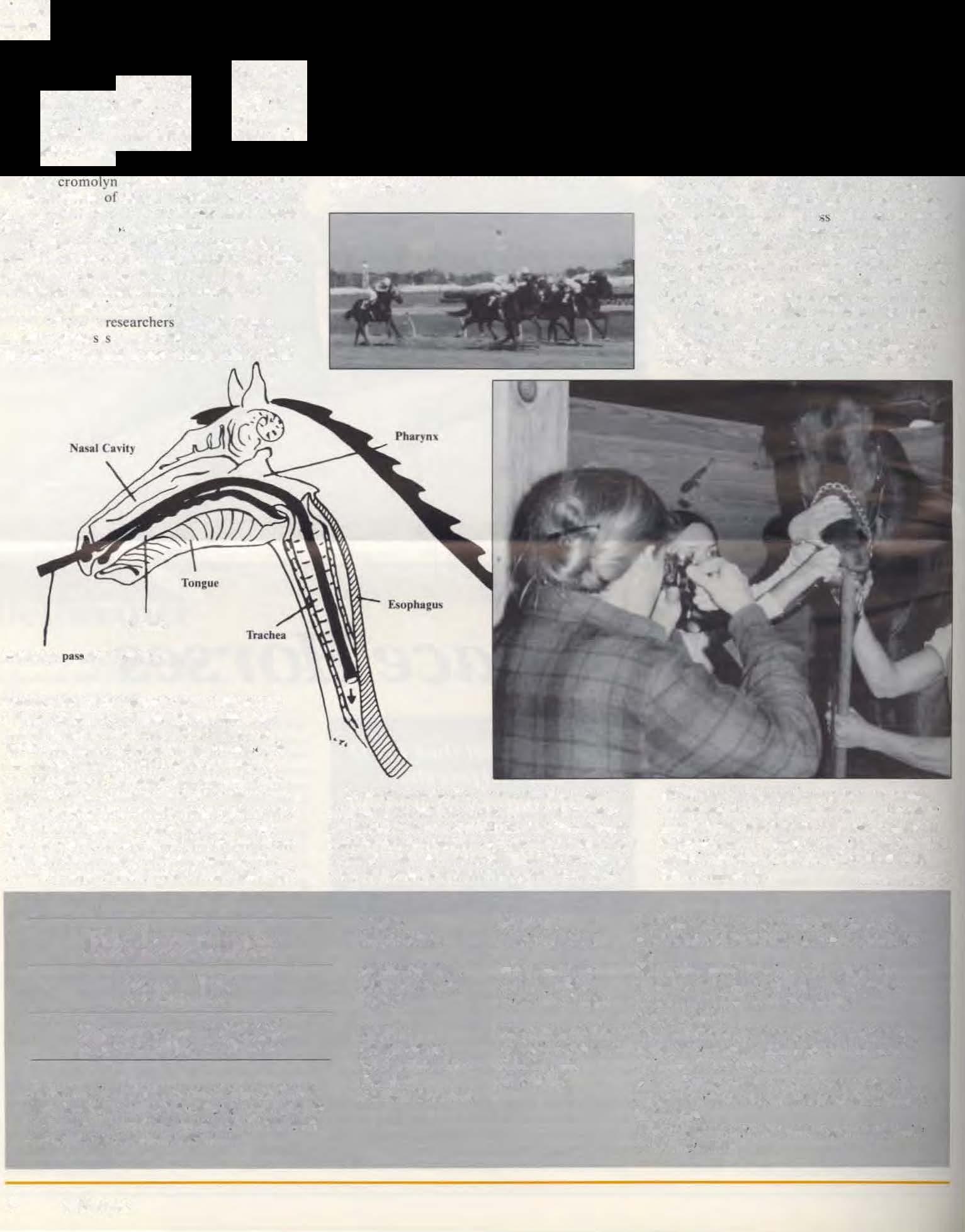
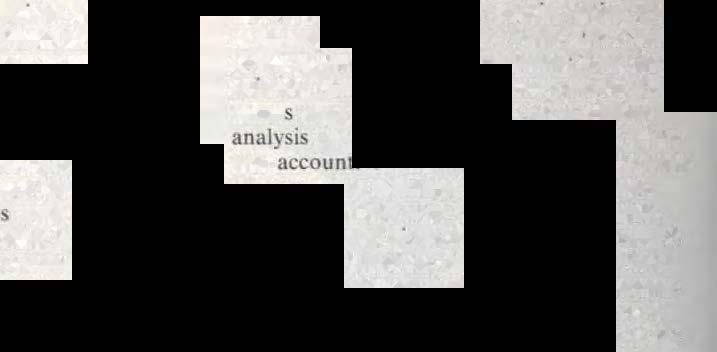
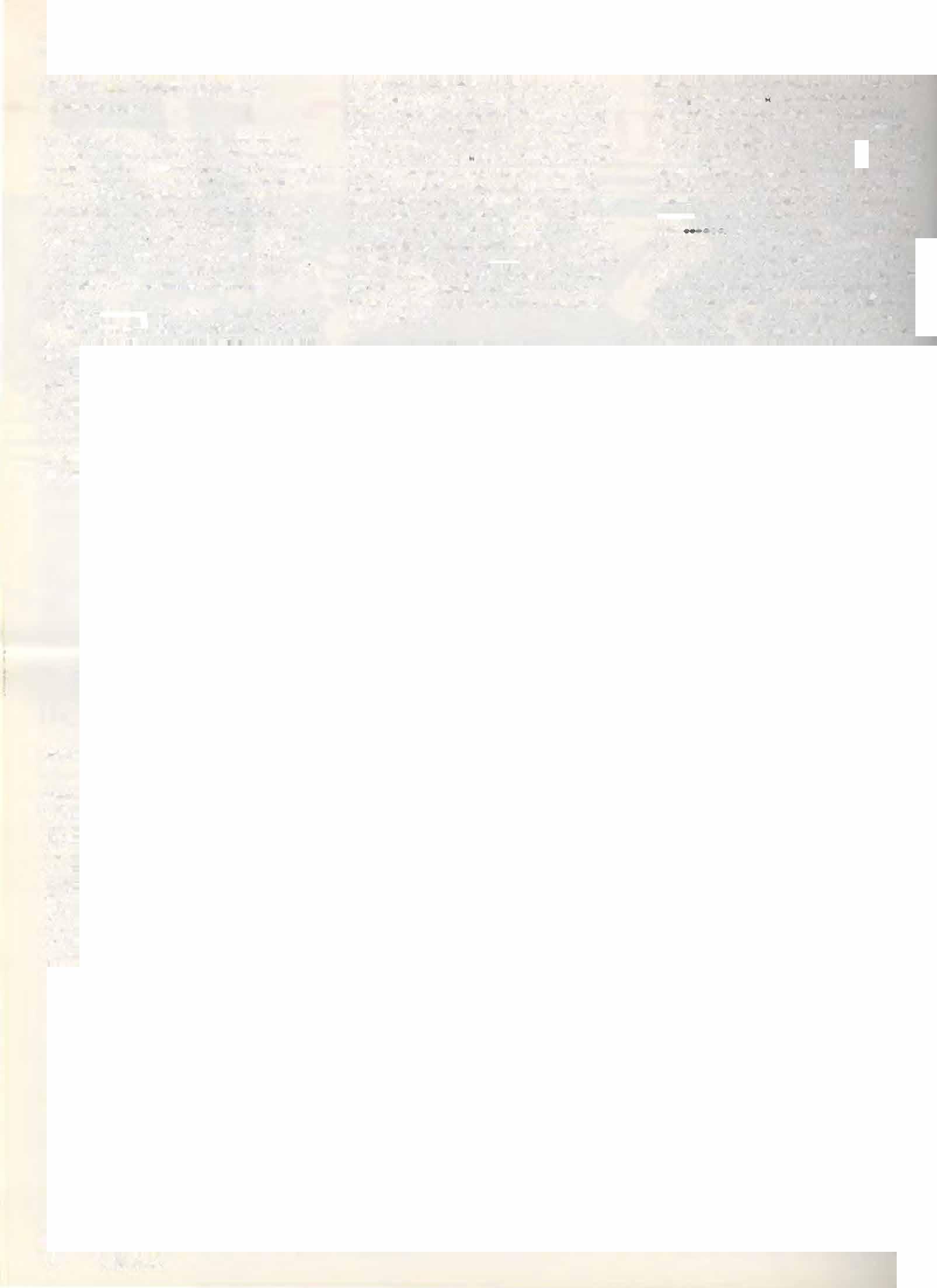 Mouth
Mouth

